Big opportunities for EPC contractors
Cleaning up oil sludges
AI in oil and gas
Measurement challenges in EOR

Alternative marine fuels
PDO’s new strategy

VOLUME 26 | ISSUE 4 2023 www.oilreview.me
Game-changing benefits from digital oilfields
the regional oil & gas sector since
26
Serving
1997

Serving the world of business
Editor: Louise Waters - louise.waters@alaincharles.com
Editorial and Design team: Prashanth AP, Sania Aziz, Miriam Brtkova, Praveen CP, Robert Daniels, Shivani Dhruv, Matthew Hayhoe, Leah Kelly, Rahul Puthenveedu, Madhuri Ramesh, Madhurima Sengupta and Minhaj Zia
Publisher: Nick Fordham
Head of Sales: Vinay Nair
vinay.nair@alaincharles.com
Magazine Sales Manager: Tanmay Mishra
+91 98800 75908
tanmay.mishra@alaincharles.com
International Representatives
Nigeria Bola Olowo
+234 8034349299
bola.olowo@alaincharles.com
Head Office:
Alain Charles Publishing Ltd University House, 11-13 Lower Grosvenor Place, London, SW1W 0EX, United Kingdom
+44 (0) 20 7834 7676 +44 (0) 20 7973 0076
Middle East Regional Office:
Alain Charles Middle East FZ-LLC Office L2-112, Loft Office 2, Entrance B, P.O. Box 502207, Dubai Media City, UAE
+971 4 448 9260, +971 4 448 9261
Production: Rinta Denil, Ranjith Ekambaram
Eugenia Nelly Mendes and Infant Prakash
production@alaincharles.com
Subscriptions: circulation@alaincharles.com
Chairman: Derek Fordham
Printed by: Buxton Press
Printed in: June 2023
© Oil Review Middle East ISSN: 1464-9314
Editor’s note
THE BENEFITS AND drawbacks of AI have certainly hit the headlines recently. Our article on p36 looks at how key players in the oil and gas sectors are embracing AI as a means to enhance efficiency, boost production rates and minimise costs. Also on the digital theme, SLB’s VP Digital – MENA discusses the benefits of digital drilling solutions, which offer the power to automate repetitive tasks and control operations from the comfort of the office or even the home, bringing improvements in operational performance and reduced risks (p31). We also see how the Ground Twin can help operators unlock insights from geo-data and manage ground-related risks. (p34).
Other issues addressed in this packed issue include alternative maritime fuels, a new environmentally-friendly technology for cleaning oil sludges, the booming EPC market, measurement challenges in EOR and PDO’s new business strategy.
Contents
Calendar
4 Executives’ calendar
Listings of regional and international events, with previews of Gastech, ADIPEC and the MENA HSE Forum
News
6 Developments
A round-up of the latest news from around the region and beyond
Oman
12 Adapting to the rapidly changing energy landscape
PDO is putting the focus on low-carbon energy, while continuing to grow its oil and gas production EPC
17 EPC contractors thrive in busy Gulf energy market
A healthy deal pipeline for EPC work in the Middle East bodes well for energy contractors
Oil Spill Management
19 Cleaning up oil sludges
An innovative greentech process could provide an environmentally-friendly solution to clean Kuwait’s heavy oil contamination
Transport
24 Charting the course of alternative maritime fuels
The maritime sector is looking towards innovative solutions to revolutionise the industry’s fuel landscape
Technology
25 Measurement challenges in EOR
The importance of measurement to better understand, optimise and control the EOR process
27 Keeping remote oil and gas assets connected Interoperability is key to keeping remote and offshore assets connected
29 Reducing flaring to meet the sustainability agenda
Exploring alternative technologies such as HIPPS can help cut down emissions
31 Digital drilling brings gamechanging benefits
SLB’s VP Digital – MENA discusses how digital driling solutions can help operators achieve a step-change in efficiency, safety and sustainability
34 Providing a solid digital foundation with a Ground Twin
How a Ground Twin can help operators unlock insights from geo-data, manage ground-related risks and improve their operations
36 Transforming the oil and gas industry: the rise of AI
Key players in the oil and gas industry are embracing artificial intelligence
38 Why the wellhead matters
The importance of prioritising quality when selecting wellheads
Innovations
41 The latest product launches in oil and gas
Arabic
4 Analysis
Front Cover Image: Adobe Stock
Back Cover Image: Adobe Stock
www.oilreview.me email: orme@alaincharles.com
Issue 4 2023 oilreview.me 3
Executives’ Calendar, 2023
Readers should verify dates and location with sponsoring organisations, as this information is sometimes subject to change.
Gastech – at the heart of the energy conversation
GLOBAL ENERGY EXPERTS convening in Singapore for Gastech 2023 will include CEOs, company presidents, and executive chairs of high-level international energy businesses and organisations, including Baker Hughes, Shell, ExxonMobil, and the International Energy Forum.
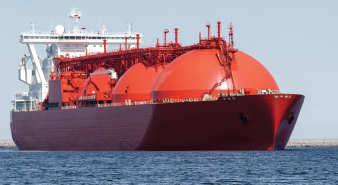
This year’s edition of Gastech is supported by Enterprise Singapore and Singapore Tourism Board, and co-hosted by ExxonMobil, Chevron, Shell, and Venture Global LNG. It will take place at Singapore EXPO, on 5-8 September 2023.
The 2023 programme, which includes high-level ministerial sessions, leadership roundtables and technical and commercial conferences, will focus on the major themes of energy supply security, low-carbon energy for sustainable global growth, energy transition alliances, and the development of the energy industry workforce globally.
Taking place in the build-up to COP28, Gastech 2023 will elaborate on the ideas, solutions and innovations that will enable the energy industry to manage and deliver the transition to low-carbon energy, whilst continuing to supply the world with its energy needs. Through high-level panel discussions focused on the importance of low-carbon solutions and climate technologies industries, global business leaders will elaborate on the investment and regulation strategies required to ensure global energy security, affordability and sustainability.
The energy supplies needed in the years ahead, and the need for energy systems to be on track for net zero emissions by 2050, are already heightening the pressure on the investment community. During the Gastech 2023 Strategic Conference, global energy leaders will share insights on the investment landscape required to stimulate adequate funding on both new and existing energy production as well as next generation energy solutions and climate technologies. Shifts in financing strategies, a changing appetite for risk and a demand for greater flexibility are transforming partnership models. As the gas industry both expands and fragments, introducing greater liquidity and optionality, Gastech will examine how new opportunities for partnerships are being established in the global LNG market and demonstrate the resilience and agility of natural gas.
Speakers slated to attend Gastech 2023 include Joseph McMonigle, secretary general of the International Energy Forum (IEF); Lorenzo Simonelli, chairman and CEO of Baker Hughes; Meg O’Neill, CEO & managing director of Woodside Energy; Peter Clarke, senior vice president, Global LNG of ExxonMobil; Takayuki Ueda, president and CEO of INPEX; Russell Hardy, CEO of Vitol; Michael Lewis, CEO of Uniper; Akshay Kumar Singh, managing
director and CEO of Petronet LNG Ltd; Proscovia Nabbanja, CEO of Uganda National Oil Company (UNOC); Paul Everingham, CEO of Asia Natural Gas & Energy Association (ANGEA); Dan Brouillette, president of Sempra Infrastructure; Iqbal Z Ahmed, chairman of the Pakistan Gas Consortium; Paul Varello, founder and executive chairman of Commonwealth LNG; Freeman Shaheen, president of Chevron Global Gas; Federica Berra, senior vice president, BP; and Cederic Cremers, executive vice president – LNG, Shell.
Lorenzo Simonelli, chairman and CEO, Baker Hughes said, “We believe that transforming the global energy landscape necessitates highly collaborative business models and constructive partnerships across the energy industry value chain. We are committed to working together with our partners to drive impactful change and create a better energy future for all. Gastech will facilitate the cross-industry partnerships needed to make a real difference in the global energy sector and improve energy reliability, affordability and sustainability.”
Peter Clarke, senior vice president – Global LNG, ExxonMobil, said, “The global LNG market is dynamic and resilient – unlocking its potential is key to meeting society’s future energy demand. As co-host of Gastech 2023, ExxonMobil remains committed to driving innovation and providing customers around the world with reliable, lower-emission LNG solutions. Gastech is the premier global platform with the power to accelerate energy leaders’ and other stakeholders’ shared ambition: providing affordable and reliable energy to a growing population which is seeking a higher standard of living while lowering emissions.”
For more information, please visit www.gastechevent.com
Calendar 2023
4 oilreview.me Issue 4 2023
The LNG market will be one of the focuses of Gastech.
Image
Credit
Adobe Stock
SEPTEMBER 5-8 Gastech SINGAPORE www.gastechevent.com 5-8 Offshore Europe ABERDEEN www.offshore-europe.com OCTOBER 2-5 ADIPEC ABU DHABI www.adipec.com 9-13 Africa Oil Week CAPE TOWN www.africa-oilweek.com 16-18 Energy & Sustainability Forum MENA RIYADH www.europetro.com/esfmena 17-19 Energy Intelligence Forum LONDON www.energyintelligenceforum.com NOVEMBER 1-2 MENA HSE Forum DUBAI www.hse-forum.com/mena 27-28 LEWAS Awards 2023 AL KHOBAR www.lewa-symposium.org
ADIPEC 2023 to focus on acceleration of decarbonisation of energy
ADIPEC 2023 WILL take place in Abu Dhabi from 2-5 October, bringing together industry leaders, innovators, and policymakers to accelerate the practical action and credible solutions needed to tackle the biggest challenges in energy and climate.
Held under the patronage of His Highness Sheikh Mohamed Bin Zayed Al Nahyan, President of the United Arab Emirates, and hosted by ADNOC, the theme for ADIPEC 2023 is ‘Decarbonising. Faster. Together.’
ADIPEC 2023 takes place less than two months before the UAE hosts the 28th United Nations Climate Change Conference (COP28), providing a platform for the energy industry to advance credible solutions and collective action towards eliminating methane emissions, phasing out carbon emissions across the value chain to achieve net zero by 2050, assuring energy security and investment in the global south, as well as scaling-up clean energies and decarbonisation technologies.
Tayba Al Hashemi, Chair of ADIPEC 2023 and CEO of ADNOC Offshore, said, “By 2030, the world will be home to an additional half a billion people, demanding more energy every year. At the same time, the global challenge of climate change calls for urgent, game-changing solutions to eliminate emissions. Every government, industry, business and individual has a role to play in decarbonising quicker, and creating the future of energy, faster, while safeguarding energy security and ensuring nobody is left behind.
“ADIPEC 2023 will be a progressive force for energy transformation and leadership. It will unite the expanding and increasingly diverse world of energy and help us work together to transform, decarbonise and futureproof our industry, by accelerating the innovation and tangible actions needed to enable a lower-carbon and higher-growth future for the world.”
ADIPEC 2023, which is expected to attract more than 160,000 attendees, will host over 350 conference sessions across 10 strategic and technical programmes – including a new Hydrogen Strategic Conference
– with more than 1,500 speakers.
ADIPEC 2023 will host more than 350 conference sessions.
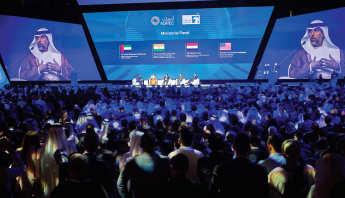
Christopher Hudson, president of dmg events, organisers of ADIPEC 2023, said, "ADIPEC 2023 will actively support the transformative global energy agenda. As climate challenges intensify, the energy sector’s responsibility to lead the necessary progress on decarbonisation is greater today than ever before. ADIPEC 2023 will bring key industry decision-makers together to accelerate the innovation, collaboration, and investment necessary to drive us towards a lower-carbon future."
ADIPEC 2023’s exhibition will host more than 2,200 companies from around the world. The exhibition will include four dedicated industry zones – an expanded Decarbonisation Zone, the Digitalisation in Energy Zone, a Maritime and Logistics Zone, and a dedicated Manufacturing and Industrialisation Exhibition and Conference.
For further information visit adipec.com
MENA HSE Forum returns to Dubai in November

BACK WITH A power-packed speaker line-up, MENA HSE Forum, to be held from 1-2 November in Dubai, will highlight the role of digitalisation in the health and safety sector.
The forum is already gaining traction as executives from important sectors join the premier HSE conference to exchange crucial knowledge on cutting-edge practices, and receive access to the newest developments to promote HSE in the Middle East. More than 200 participants from the UAE, Saudi Arabia, Qatar, Oman, and Bahrain's HSE community are anticipated. Aviation, construction, real estate, and oil and gas are just some of the industries that will be represented at the forum. Attendees can look forward to presentations from corporates such as Emirates Airlines, ADNOC, Petrofac, Aura, DP World, Asyad Drydocks, DAMAC Properties, and Red Sea Global among many others. Apart from this, attendees will also be able to hear from regulatory bodies such as Dubai Municipality.
Confirmed speakers include Sultan Karrani, senior engineer - HSE,
ADNOC; Saleh Al Balushi, HSE director, DP World - Drydocks World; Lynn Hobballah, head of health & safety, Petrofac; Michael James, director of health & safety, Red Sea Global; Ronald Otte, director of health & safety, Emirates Global Aluminium; Mona Adel Abdulaziz, workplace health & safety manager, Emirates Airlines; Paul Slater, executive director QHSE, Saudi Entertainment Ventures, and others. The eighth edition of the conference will centre around six key themes:
Digitalising HSE: Driving Transformation
Consistent Responsibility: Training & Audit
Effective Management: Process Safety
Resilient future of HSE: Sustainability through ESG Practices
Psychological-based Safety
Global Projects: Diverse Laws

Vinay T, head of events at Alain Charles Publishing, commented, “The latest edition of the MENA HSE Forum will be a fantastic chance to share and learn latest HSE best practices and network with the MENA HSE fraternity in person. We realised early on in our research that in the Middle East, HSE is not just a corporate wing of large companies. It is instead a tight-knit community of dedicated professionals who are most interested in knowledge sharing. This has allowed us to create this exclusive event for the HSE community which will also be the perfect platform for solution providers and manufacturers to display and demonstrate their services and solutions to key players in the region.”
For further information see the website at https://www.hse-forum.com/mena
To receive last year’s report, visit this link: https://hse-forum.com/mena/brochure
For speaker and sponsor opportunities, please get in touch with Vinay T, head of events, Middle East. Email: vinay.nair@alaincharles.com. tel: +971 4 448 9260.
Events
The event will provide a great opportunity to share and learn the latest HSE best practices and network with the MENA HSE community.
Issue 4 2023 oilreview.me 5
Image credit: dmg events
Image credit@ Alain Chalres Events
Eni to help Libya reduce emissions and develop sustainable
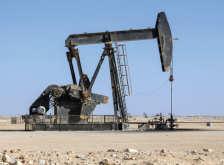
energy
ENI HAS SIGNED a memorandum of understanding with Libya with the aim of studying and identifying opportunities to reduce greenhouse gas emissions and developing sustainable energy in the country.
The signing took place as part of the visit of the Prime Minister of the Government of Libyan National Unity, Abulhamid Dabaiba, to Italy.
Under the terms of the memorandum, Eni will work on reducing CO2 emissions through the reduction of routine gas flaring, fugitive emissions and venting, as well as possible projects for the reduction of hard-to-abate sector emissions.
In addition, new solutions for the development of renewable energy and initiatives for electricity efficiency in the country will be evaluated. The company will also work on the identification of additional gas resources from existing fields, to be developed as part of an integrated project for the domestic market and potentially for export.
Eni is the main international gas producer in Libya, with an 80% share of national production (1.6 bscfd in 2022). The company has been operating in Libya since 1959 and currently has a large portfolio of assets in exploration, production and development. Production activities are operated through the joint venture Mellitah Oil and Gas BV (Eni 50%, NOC 50%). Equity production was 165,000 barrels of oil equivalent per day in 2022.
Ducab, Baker Hughes sign MoU on power cables solution
DUCAB, ONE OF the UAE’s end-to-end energy solution providers and manufacturing businesses has signed a Memorandum of Understanding (MOU) with Baker Hughes, an energy technology company, which will help accelerate the development and manufacturing of power cables for electrical submersible pumps, acting as a dynamic solution for oil and gas customers, including ADNOC. The MOU holds the possibility of a future agreement between Ducab and Baker Hughes specifically regarding Ducab’s potential role in manufacturing pumps for Baker Hughes in the UAE.
Mohamed Al Ahmedi, CEO of Ducab Metals Business said, “The agreement we have signed with Baker Hughes not only expands our network of partners but supports the development of cutting-edge products here in the UAE, in line with our ongoing commitment and support for the ‘Make it in the Emirates’ initiative.”
“For Ducab, it will act as a platform to accelerate the development and manufacturing of power cables for Electrical Submersible Pumps, acting as a dynamic solution for oil and gas customers. More widely, the agreement will help contribute to our national progress and further leverage the UAE’s competitive advantages,” he added. He concluded, “It reflects the attractiveness of the UAE’s industrial sector and the strength of local manufacturing.”
Charles Mellagui, CEO for the Cable Business Unit at Ducab Group, said, “We are constantly developing our products to keep pace with the growing needs of our customers and offer them added value. We are confident that the new cables for the Electrical Submersible Pumps will serve to enhance operations for ADNOC, Borouge, and other leading oil and gas companies in the region.”
Zac Crouch, vice president of Baker Hughes Oil Field Services and Equipment MENATI region, said, “This agreement with Ducab marks an important milestone in our efforts to advance the oil and gas industry. By accelerating the development and manufacturing of power cables for electric submersible pumps in the UAE, we are taking significant steps toward providing more efficient and dynamic solutions for traditional energy companies. This MOU sets the stage for fruitful discussions that may lead to a future contractual commitment while driving innovation in the industry.”
Make it in the Emirates is organised by The Ministry of Industry and Advanced Technology (MoIAT), in conjunction with the Abu Dhabi Department of Economic Development (ADDED) and ADNOC. The Forum brings together the largest industrial companies and enablers from across the UAE to share their procurement plans, significant investment opportunities and how these translate into local manufacturing investment opportunities.
ADNOC L&S awarded US$975mn contract for offshore island construction

ADNOC LOGISTICS AND Services plc (ADNOC L&S), a global energy maritime logistics leader, announced that it has been awarded a US$975mn artificial island construction contract by ADNOC Offshore.
As part of ADNOC’s In-Country Value programme, at least 75% of the total contract value for dredging, land reclamation and marine construction of an artificial island ‘G’ for the Lower Zakum offshore field, will flow back into the UAE economy.
This award is a significant milestone in ADNOC L&S’s strategy to pursue new growth opportunities. The company’s Integrated Logistics business unit is an end-to-end, fully integrated energy logistics services provider. The provision of Engineering, Procurement and Construction (EPC) services in the integrated logistics business is a new offering by ADNOC L&S in line with its announced strategy to achieve significant ongoing growth, including expansion into new verticals.
The EPC market is expected to experience substantial growth in the region in the coming years. The company aims to offer a broader range of services to its customers while facilitating the growth of ADNOC’s upstream and downstream operations.
This is the first major award for the group after it listed on the Abu Dhabi Securities Exchange (ADX) on 1 June 2023 following the highest demand globally for an IPO this year.
Captain Abdulkareem Al Masabi, CEO of ADNOC L&S, said, “Capitalising on our project management expertise, end-to-end logistics solutions, and strategic partnerships, ADNOC L&S is primed to execute major offshore EPC contracts that support our customers’ ambitious growth plans and deliver value to our shareholders. This contract award for the construction of artificial island ‘G’ exemplifies our strategy to tap into new growth areas, showcasing the expanding range of services we offer to our customers and the trust that ADNOC Offshore has placed in us as their partner of choice.”
News
Eni is the main gas producer in Libya.
6 oilreview.me Issue 4 2023
ADNOC L&S jack-up barge.
Image Credit: Adobe Stock
Image Credit: ADNOC L&S
Petrofac confirms signing of EPC contract in Algeria
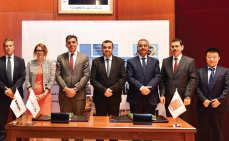
PETROFAC HAS ENTERED into a definitive agreement with STEP Polymers SPA for the design and build of its petrochemical complex in the Arzew Industrial Zone in Algeria.
As previously announced, Petrofac will deliver the US$1.5bn project with its joint venture partner China Huanqiu Contracting & Engineering Corporation (HQC), with Petrofac’s share valued at over US$1 billion. The contract was signed at an official ceremony in Algiers by representatives of Petrofac, HQC and STEP.
“I am delighted to be in Algiers alongside our partner and client to mark the official award of this pioneering project. Broadening Petrofac’s portfolio within the petrochemical sector, this contract builds on our 25-year track record of safely delivering strategically significant energy infrastructure in Algeria, while developing local workforces,” said Tareq Kawash, Petrofac’s group chief executive.
Jotun expands R&D facility for fire protection coatings

GLOBAL PAINTS AND coatings
manufacturer, Jotun, which is one of the major providers of intumescent fire protection coatings for the infrastructure and energy industries, has announced the completion of a major expansion of its Global Intumescent R&D Laboratory to advance new product innovation and technologies. This ambitious expansion more than doubles the size of the of the Flixborough Global Intumescent R&D facility, aiming to increase Jotun’s product development and fire testing capacity and capabilities. The new facilities will accelerate the development of new innovations and more advanced products, while providing additional certification support to Jotun’s existing product range. The enhanced facility increases capacity and capability for Jotun’s ongoing development of intumescent fire protection coatings SteelMaster for steel structures within the infrastructure market and Jotachar for vital assets in the energy industries.
 The opening ceremony.
The contract was signed at an official ceremony in Algiers.
The opening ceremony.
The contract was signed at an official ceremony in Algiers.
News Issue 4 2023 oilreview.me 7
Image Credit: Petrofac Image Credit: Jotun
Aberdeen Drilling School (ADS) acquires IAS International; looks to propel
Middle East growth
GLOBAL TRAINING AND consultancy company
Aberdeen
Drilling School (ADS) has acquired IAS International to enhance its training and competency management portfolio for the Middle East market. To increase growth in the region, ADS MENA has appointed Graeme Eglintine as its regional director, and Petru Cioban as operations director.

Driven by increasing demand for workforce development to meet the needs of the booming drilling market, ADS will now offer a broader portfolio of products and services including new hire assessments, role-specific progression programmes, and rig reactivation support. The company aims to double its MENA customer base by 2024 and will increase its headcount in the region by 150% over the next 18 months to service growth.
So far, the company has developed well control training in more than 50 countries since its inception in 1982. ADS employs 50 people globally and as part of the RelyOn Nutec group, it reaches more than 10,000 businesses across 20 countries.
Shell looks to reduce emissions
SHELL SHOWCASED ITS updated strategy to create more value with less emissions to its investors on 14 June. The company aims to deliver increased shareholder returns through a balanced energy transition.
Shell will grow its integrated gas business along with its Upstream business to achieve cash flow longevity by stabilising liquids production to 2030. Shell also intends to continue building solutions for low-carbon fuels and electric vehicle charging. It will invest further in hydrogen and carbon capture and storage (CCS). For this, the company is planning to invest US$10-15bn from 2023 to 2025.
Its Energy and Chemicals Parks footprint will be repurposed its to offer more low-carbon solutions to its customers. Selectively investing in power, Shell will focus on markets where its trading activities and customer reach can help to deliver higher returns.
The company is also aiming to achieve near-zero methane emissions by 2030 and to eliminate routine flaring from its Upstream operations by 2025.
Iraq calls for bids for natural gas development

IRAQ’S OIL MINISTRY on 18 June invited foreign companies to explore and develop natural gas reserves in 11 new blocks.
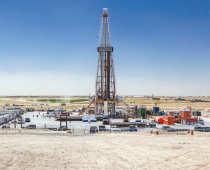
According to Iraq’s Oil Minister Hayan Abdel Ghani, the aim of the sixth round of bidding is to increase oil and gas deposits as part of a post-war development plan.
Abdel Ghani was cited by Aliqtisad News and other Iraqi outlets as saying that the Al Anbar governorate will have nine concession zones.
Eight of the gas exploration blocks are situated in the Anbar governorate in western Iraq, one is in the northern Iraqi city of Mosul, one is between Anbar and Mosul, and the last one is between Anbar and Najaf in central Iraq, according to the announcement.
INDIA’S INFINITE MINING & Energy has announced plans to double its investment in the Hamriyah free zone and establish a multifunctional oil refinery. The new facility will have a daily production capacity of 10,000 barrels and an annual refining capability of up to 3.6mn barrels.
Under the agreement, Infinite will lease a 200,000 sq ft plot of land in the free zone to build its facilities. This expansion is expected to significantly increase the company's storage capacity, catering to the growing demand for its services and products.
H.E. Saud Salim Al Mazrouei, director of the HFZA, said Infinite’s new expansion plans demonstrates HFZA’s leading reputation as a preferred investment destination for heavy industries and the petrochemical sector.
Al Mazrouei added that the company's choice of Hamriyah Free Zone to establish a multifunctional oil refinery underscores the high global standards and the favourable investment climate HFZA offers to investors in the energy and oil sectors.

“As of today, the free zone houses more than 1,200 companies, including major international corporations specialising in this sector. They operate within a dedicated area for petrochemical industries, which boasts a strategic location and is connected to a commercial port with a depth of 14 metres.”
The minister added that two further sites are located in the Northern Nineveh governorate and that Iraq also seeks to boost its gas resources for the operation of its power plants as well as the petrochemical and fertiliser sectors.
The ministry's announcement of the sixth bid round continues to build on momentum from the signing in February of six contracts, including four gas blocks, that had originally been granted in the fifth bid round in 2018.
A "five-plus" round for 13 oil and gas blocks was announced by the ministry in May as a follow-up, including some that had been offered but not selected in the fifth round.
Without providing a deadline for bid submission, the ministry said that all necessary preparations had been made in order to award the licenses for gas exploration. Due to a lack of facilities to turn its gas into fuel, Iraq wastes a significant amount of its gas in oil extraction processes and instead depends on gas imports from Iran to power its electricity plants. The new bids could help reduce this dependency.
Infinite Mining & Energy to establish oil refinery in Hamriyah free zone
News
Graeme Eglintine and Petru Cioban.
Oil and gas operations in Iraq.
8 oilreview.me Issue 4 2023 Image Credit: ADS
H.E. Saud Salim Al Mazrouei and Bilal Merchant.
Image Credit: Adobe Stock Image Credit: Hamriyah Free Zone Authority
OSSO invests in mud cooling fleet

OSSO, THE SPECIALIST fluid temperature control and separation solutions provider, announces it has made a significant investment into its Middle Eastern mud cooling offering, expanding its fleet size by 150% and adding a full turnkey service offering. Through this investment OSSO will provide an additional 14,000 manhours of employment locally in the region. The additional equipment added to the fleet has also been constructed in the Middle East, supporting national governments in retaining in-country value and ensuring carbon savings through minimising transportation and travel costs.
“We have over 8 years’ experience and have supported the drilling of over 80 HPHT wells in the UAE, Saudi Arabia, Oman and across the Middle East. Now as the region is entering a strong growth cycle, this is the perfect moment for us to invest and take our proposition for operators to the next level,” said David Mitchell, Middle East regional manager at OSSO.
3t announces new partnership
GLOBAL TRAINING
PROVIDER 3t Energy Group (3t), has announced the signing of a brand-new agreement that sees Horizon OilWell Academy operate as the Group’s agent in Iraq.
Utilising a diverse portfolio of solutions, learning tools, and training courses provided by global partners and suppliers, IWCF-accredited training provider, Horizon OilWell Academy, aims to help develop the next generation of petroleum professionals. Supporting the complete value chain within the industry, Horizon OilWell Academy promote training experiences that are designed to reflect real-world experiences.

This latest agreement with 3t will see Horizon OilWell Academy adopt three of the Group’s portfolio of businesses, including the provision of Drilling Systems' fully immersive simulator products, 3t Transform’s ground-breaking and innovative VR technology, and bespoke training courses tailored to suit the requirements of the region, provided by AIS Survivex.
Ian Hunt, vice-president of sales for MENA said, “This is an incredibly exciting development for the Group that will allow 3t the chance to make a lasting impact on the standards of training within the region and the level of employee confidence and competence.”
 Horizon OilWell Academy utilising 3t Energy Group's simulation technology.
David Mitchell, Middle East manager, OSSO
Horizon OilWell Academy utilising 3t Energy Group's simulation technology.
David Mitchell, Middle East manager, OSSO
News Issue 4 2023 oilreview.me 9 Image Credit : OSSO
Image Credit: 3t Energy Group
Rig utilisation on the up: Wood Mackenzie
RIG UTILISATION HAS returned to pre-COVID levels, driving rates up 40% in the past year as demand is forecast to increase another 20% from 2024-2025, according to a recent report from Wood Mackenzie
According to the report “Are we at the tipping point of the deepwater rig market?” active floater utilisation has rebounded from a low of 65% in 2018 to more than 85% in 2023, the number of contracted ultra-deepwater (UDW) benign rigs has returned to pre-COVID levels and day rates for best-in-class floaters have doubled in the past two years.
“Higher oil prices, the focus on energy security and deepwater’s emissions advantages have supported deepwater development and, to some extent, boosted exploration,” said Leslie Cook, principal analyst for Wood Mackenzie. “Active supply is now more in line with demand and rig cash flows are positive. We expect demand to continue to rise.”
Much of this expected growth will come from the “Golden Triangle” of Latin America, North America and Africa, as well as parts of the Mediterranean. Wood Mackenzie projects that these areas will account for 75% of global floating rig demand through 2027.
Development of Gaza gas field on the cards
ISRAEL HAS GIVEN preliminary approval for the development of a gas field off the Gaza Strip while saying it would require security coordination with the Palestinian Authority and neighbouring Egypt, according to a Reuters report. If concluded, the agreement would be a boost for the embattled Palestinian economy.
Announcing the move on the Gaza Marine project, Prime Minister Benjamin Netanyahu's office said progress would hinge on "preserving the State of Israel's security and diplomatic needs". It added that the project falls within the framework of the ongoing negotiations between Israel, Egypt and the Palestinian Authority.
While Egypt and Israel have been producing gas in the eastern Mediterranean for years, the Gaza Marine field, around 30 km (20 miles) off the Gaza coast, has remained undeveloped due to political disputes and conflict with Israel, as well as economic factors.
The Gaza gas fields were first discovered in 1999 in Palestinian territorial waters. Gaza Marine is estimated to hold more than 1 trillion cubic feet of natural gas.
ADNOC Logistics and Services expands its fleet of VLCCs
ADNOC LOGISTICS AND Services plc, a global energy maritime logistics leader, has taken delivery of a newbuild Very Large Crude Carrier (VLCC), Hafeet, as it expands its fleet.
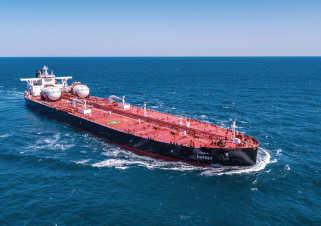
The vessel is the first of four dual-fuel engine VLCCs, which can also run on Liquified Natural Gas (LNG), that will be delivered this year to support the company’s smart growth strategy.
ADNOC L&S has committed approximately US$2bn to building more environmentally efficient vessels and has successfully reduced the carbon intensity of its owned fleet by more than 20% since 2018.
Captain Abdulkareem Al Masabi, CEO of ADNOC L&S, said, “The addition of Hafeet, the first of four newbuild VLCCs to our expanding ADNOC L&S fleet, will increase our energy transportation capacity in line with our ambitious growth strategy. Our strategic investment in new, environmentally efficient vessels reinforces our commitment to more sustainable shipping and to decreasing the carbon intensity of our operations, as we continue to work towards meeting the International Maritime Organization’s decarbonisation targets of halving annual greenhouse gas (GHG) emissions from international shipping by 2050.”
VLCC Hafeet, designed for long-haul voyages to ship crude to customers worldwide, has a length of 336 metres and a deadweight of 300,000 metric tons, carrying approximately two million barrels of crude per voyage.
Energy industry increases cyber security spending
NEW RESEARCH PUBLISHED by DNV reveals that the energy industry is ramping up its cyber security spending this year in response to heightened geopolitical tensions and the rapid adoption of digitally connected infrastructure.
The study, titled Energy Cyber Priority 2023: Closing the gap between awareness and action, which surveyed 600 energy professionals, highlights growing concerns over the sector's vulnerabilities to emerging cyber threats.

According to the findings, a majority of respondents (59%) state that their organisations are investing more in cyber security in 2023 compared to the previous year. This increased investment reflects the industry's acknowledgment that cyberattacks are not a matter of ‘if’ but ‘when’. In fact, two-thirds (64%) of the respondents believe that their organisation's infrastructure is now more vulnerable to cyber threats than ever before, attributing this vulnerability to the prevailing geopolitical tensions.
Ditlev Engel, CEO of energy systems at DNV, said, "Cyber security is critical for the energy industry, for the industry's digital transformation, and for the acceleration of the energy transition." He further emphasised the interconnectedness of safety, security, and the deployment of clean energy technologies required to meet the goals of the Paris Agreement.
To unlock increased budgets for cyber security, energy professionals point to regulation as the primary driver, followed by the occurrence of a cyber incident or near miss. The industry must prepare to comply with new, stricter cyber security requirements in the coming years, as authorities urge energy businesses to enhance their resilience against emerging threats.
Another significant challenge highlighted in the research is the shortage of cyber security skills and the need for effective collaboration.
News
The rise of digitally-connected infrastructure is driving up cybersecurity spending.
10 oilreview.me Issue 4 2023
The newbuild VLCC, Hafeet.
Image credit: Adobe Stock Image credit: ADNOC Logistics and Services
Forecasting global oil demand
THE Oil 2023 medium-term market report forecasts that based on current government policies and market trends, global oil demand will rise by 6% between 2022 and 2028 to reach 105.7 mn bpd – supported by robust demand from the petrochemical and aviation sectors. Despite this cumulative increase, annual demand growth is expected to shrivel from 2.4 mn bpd this year to just 0.4 mn bpd in 2028, putting a peak in demand in sight
Oil for transport set to decline
In particular, the use of oil for transport fuels is set to go into decline after 2026 as the expansion of electric vehicles, the growth of biofuels and improving fuel economy reduce consumption.
“The shift to a clean energy economy is picking up pace, with a peak in global oil demand in sight before the end of this decade as electric vehicles, energy efficiency and other technologies advance,” said IEA executive director Fatih Birol. “Oil producers need to pay careful attention to the gathering pace of change and calibrate their investment decisions to ensure an orderly transition.”
Global oil markets are still slowly recalibrating after three turbulent years in which they were upended first by the Covid19 pandemic and then by Russia’s invasion of Ukraine. The global energy crisis triggered by the war in Ukraine has resulted in an unprecedented reshuffling of global trade flows. Global oil markets could tighten significantly in the coming months, as production cuts by the OPEC+ alliance temper an upswing in global oil supplies.
However, the multifaceted strains on markets look set to ease in the following years, according to the new report.
China was the last major economy to lift its stringent Covid-19 restrictions at the end of 2022, leading to a post-pandemic oil demand rebound in the first half of 2023. But demand growth in China is forecast to slow markedly from 2024 onwards. Nevertheless, burgeoning petrochemical demand and strong consumption growth in emerging and developing economies will more than offset a contraction in advanced economies.
Rising upstream investments
Global upstream investments in oil and gas exploration, extraction and production are on course to reach their highest levels since 2015, growing 11% year-on-year to US$528bn in 2023. National oil companies (NOCs) invested 14% more in 2022, overtaking the 2019 level, driven primarily by capacity building efforts in Saudi Arabia and the UAE. Saudi Aramco raised its upstream spending by around 24% to US$29bn and plans further increases to boost its crude oil capacity to 13 mn bpd by 2027. The UAE’s Adnoc plans to spend US$150bn over the next five years.
While the impact of higher spending will be partly offset by cost inflation, this level of investment, if sustained, would be adequate to meet forecast demand in the period covered by the report. However, it exceeds the amount that would be needed in a world that gets on track for net zero emissions.
The report’s projections assume major oil producers maintain their plans to build up capacity even as demand growth slows. This is expected to result in a spare capacity cushion of at least 3.8 mn bpd, concentrated in the Middle East. The report nonetheless notes a number of factors that could affect market balances over the medium term –including uncertain global economic trends, the direction of OPEC+ decisions and China’s refining industry policy.
Oil producing countries outside the
OPEC+ alliance dominate plans for increasing global supply capacity in the medium term, with an expected rise of 5.1 mn bpd by 2028 led by the United States, Brazil and Guyana. Saudi Arabia, the United Arab Emirates and Iraq lead the plans for capacity building within OPEC+, while African and Asian members are set to struggle with continuing declines, and Russian production falls due to sanctions. This makes for a net capacity gain of 0.8 mn bpd from the 23 members in OPEC+ overall over the report’s forecast period. The slowdown in US growth will enable producers from the Middle East – led by Saudi Arabia, Iraq and the UAE – to add barrels to meet demand growth. As a result, the region’s market share is forecast to rise to 32% in 2028 from 30% in 2023. Given current investment and market trends, the Middle East’s share of world oil production looks set to increase over the longer term.
Prospects for the refining sector
In the refining sector, the overhang in global capacity has been reduced by waves of closures, conversions to biofuel plants and project delays since the pandemic. This, combined with a sharp drop in Chinese oil product exports and an upheaval of Russian trade flows, resulted in record profits for the industry last year. While the amount of net refinery capacity additions by 2028 is expected to outpace demand growth for refined products, diverging trends among products means that a repeat of the 2022 tightness in middle distillates cannot be ruled out. n
Growth in the world’s demand for oil is set to slow drastically in the coming years, but the Middle East’s market share of global production is set to grow, according to a newly-released report from the IEA.
Analysis Issue 4 2023 oilreview.me 11
Saudi Aramco raised its upstream spending by around 24% to US$29bn and plans further increases.”
The Middle East’s share of world oil production looks set to increase over the longer term.”
Adapting to the rapidly changing energy landscape
IN MARCH 2023 Petroleum Development

Oman (PDO) unveiled its new corporate Purpose and Strategy, outlining how it will continue to serve Oman and deliver value to the Sultanate in a rapidly changing and volatile energy landscape. The company’s new purpose, ”Building a sustainable and lowcarbon future to maximise value for Oman” replaces its previous vision and mission which were established more than 10 years ago.
The official launch of PDO’s new strategy was announced at Oman Sustainability Week (OSW) which PDO co-hosted with the Ministry of Energy and Minerals (MEM) for the second consecutive year.
PDO managing director Steven Phimister said, “Maximising value for Oman is at the heart of our purpose, to fulfil our role in contributing to Oman’s Vision 2040 and Net Zero Emissions 2050. PDO is committed to both cost and carbon competitiveness –safely and efficiently and sustainably growing our core oil and gas business whilst minimising emissions from our operations.”
Under its new strategy, PDO aims to pioneer the new energy landscape, leading technology deployment, operational excellence, decarbonisation and supply chain development for Oman’s oil and gas industry.
Phimister added, “Oil and gas has a role in the global energy system for decades to
come, but hydrocarbon development must be sustainable. We have a responsibility to sustain the current energy system while we build the new (low carbon) energy system. PDO has bold plans to safely increase oil and gas production while at the same time halving its emissions. And PDO is wellpositioned, in partnership with others, to build sustainable low-carbon revenue streams for the future of Oman.”
leveraging our existing skills and asset base, the aim is to move first and foremost into carbon capture, utilisation and storage,” said Phimister in an interview at the event. He added that the aim is to use the CO2 mainly for EOR and EGR (enhanced gas recovery) purposes, which will require building up the required infrastructure. Further down the line, PDO will look at sequestering the CO2 in aquifer-based sites or depleted reservoirs which could also be used to help other sectors such as industry, transport and housing, achieve their decarbonisation objectives. In May 2022, PDO signed an agreement with Shell Oman to collaborate on CCUS for blue hydrogen production on Block 10, in furtherance of its blue hydrogen plans.
Meanwhile, PDO continues to grow its core oil and gas business.
At Oman Sustainability Week, PDO announced plans to move into blue hydrogen, closely associated with the development of CCUS technologies. Phimister explained that these initiatives will help generate revenue for the company.
“PDO has a strategy pillar to diversify its revenue stream as a part of diversifying the Omani economy as per Vision 2040. By
“The coming years will see continued production growth, in line with our ambition for a sustainable 700,000 bpd production plateau,” says the company. “At any point in time, PDO executes more than 200 projects that support sustainable oil and gas production.”
PDO continues to deliver the majority of the country’s crude and natural gas production, major projects including the Yibal Khuff project, which came online in 2021 and produces around five million cubic metres of gas and 20,000 barrels of crude oil per day. n
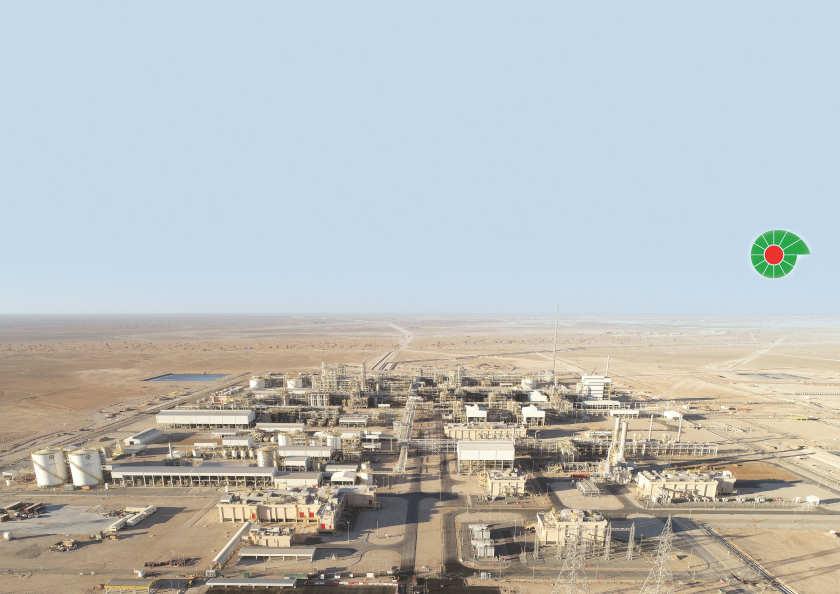 PDO’s Yibal Khuff project produces around five million cubic metres of gas and 20,000 barrels of crude oil per day.
PDO’s Yibal Khuff project produces around five million cubic metres of gas and 20,000 barrels of crude oil per day.
PDO, Oman’s leading oil and gas company, is putting the focus on low-carbon energy while continuing to grow its core oil and gas business.
Oman 12 oilreview.me Issue 4 2023
PDO has bold plans to safely increase oil and gas production while at the same time halving emissions.”
(PDO)
Image Credit: Petroleum Development Oman
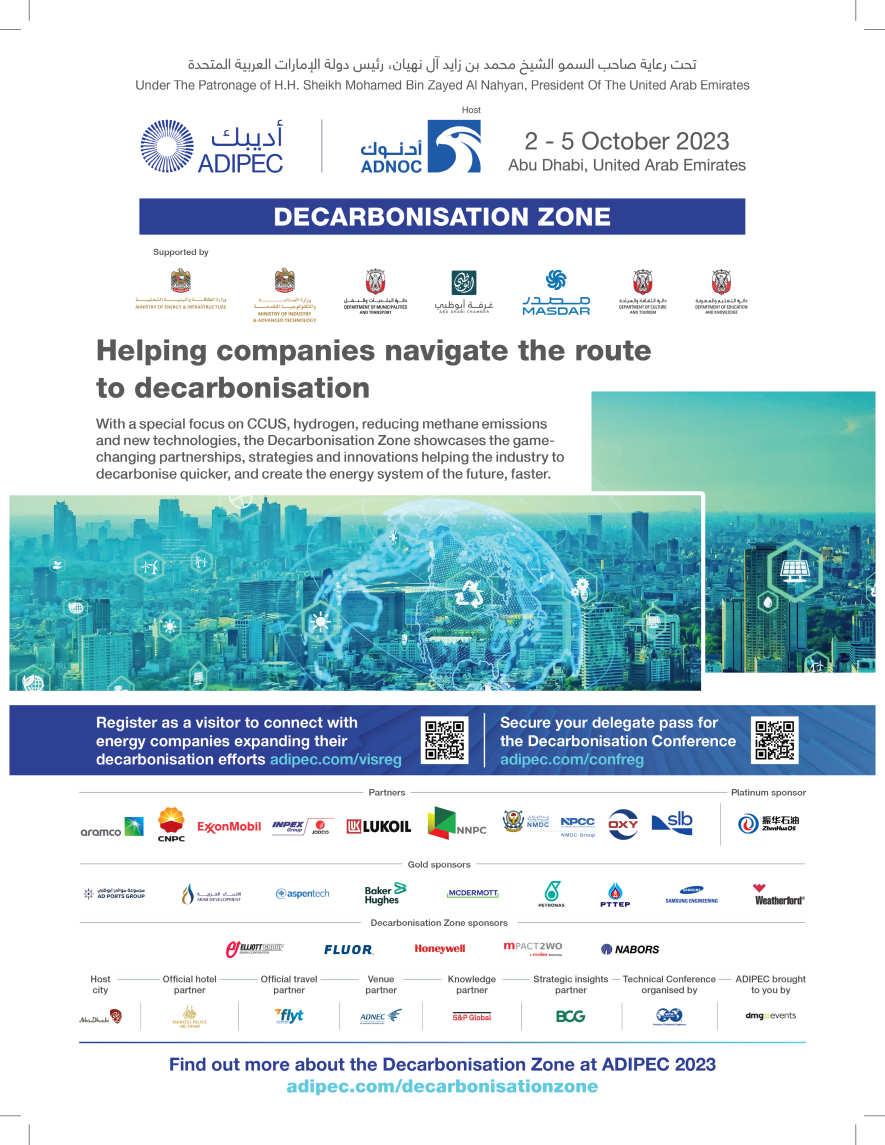
Green ammonia project to go ahead in Oman
ENGIE, A GLOBAL leader in low-carbon energy and services, together with POSCO, one of the world's largest steel producers, have announced they are leading a consortium set to mobilise Oman’s renewable energy resources through the development of a 1.2mtp Green Ammonia project. Other partners in the consortium include Samsung Engineering, Korea East-West Power Co. (EWP), Korea Southern Power Co. (KOSPO), and FutureTech Energy Ventures Company Ltd. (a subsidiary of PTTEP).
The ENGIE and POSCO led-consortium has been named the winner of land block (Z102) offered by Hydrom, the orchestrator and master planner of Oman's green hydrogen industry. Spanning 340 sq km, the concession block is located in Duqm, with downstream elements to be established at the Port of Duqm.
The land block will include a total renewable energy capacity of around 5GW which comprises wind and solar power, in addition to battery energy storage (BESS) and a hydrogen plant that will produce 200 kilotons per annum (ktpa) of green hydrogen. The hydrogen will then be transported by a pipeline to the Special Economic Zone at Duqm where it will be converted into approximately 1.2mn tons per annum (mtpa) of green ammonia for export. The Commercial Operation Date (COD) is expected by 2030.
"This venture marks a significant leap forward in its worldwide dedication to expediting the transition to low-carbon energy. With presence in Oman for more than a quarter-century, we reaffirm our unwavering commitment to supporting the energy transition in the country and the region. By joining forces with our consortium partners, we aim to unlock Oman's extraordinary renewable energy potential while capitalising on their expertise and capabilities. Ultimately, this collaboration propels ENGIE toward its global ambitions of attaining a hydrogen capacity of 4GW by 2030," said Frederic Claux, managing director Flexible Generation & Retail, AMEA and country manager GCC from ENGIE.
In March 2022, POSCO and ENGIE signed a Memorandum of Understanding (MoU) to explore joint development opportunities for green hydrogen production and related infrastructure in the Middle East, Australia, and Latin America. This venture represents a continuation of their combined efforts and progress in ENGIE’s quest for net-zero carbon
by 2045 and POSCO’s ambition for a green hydrogen-based steel business by 2050.
With strategic relevance for ENGIE and the involved nations, the project feeds into ENGIE's aim of generating 80GW of renewable capacity and 4 GW of electrolyzer capacity by 2030. The project is also in line with Korea's national decarbonisation objective of a 40% carbon footprint reduction by 2030, and aids in realising Oman's Vision 2040 that centres around energy transition and industry diversification.
The project contract will last for a period of 47 years, broken down into a seven-year development and construction phase followed by a 40-year operational period, and is set to roll out within a month of the contract signing. Construction is projected to begin in 2027, with the first shipment of green ammonia to Korea planned for the second half of 2030, thereby marking a significant step in sustainable development. The consortium will carry out the feasibility and technical studies, in order to finalise the total capital expenditure requirement for the project.
DEME, A LEADING international contractor and developer, and OQ, a global integrated energy group, have signed a Project Development Agreement with Hydrom for the pioneering HYPORT Duqm project, which will produce green hydrogen and green ammonia.
Hydrom is orchestrating Oman’s national interest in green hydrogen, is fully owned by Energy Development OMAN and regulated by the Ministry of Energy and Minerals.

HYPORT Duqm is being developed by DEME Concessions and OQ on an area of 150 sq. km. The area, which is part of the Special Economic Zone at Duqm, is designed to produce wind power and solar energy with a combined renewable power capacity of around 1.3 GW in Phase 1 and potentially over 2.7 GW when Phase 2 is realised. The first phase of the project is set
to produce approximately 330,000 tonnes of green ammonia and more than 650,000 tonnes during the second phase.
Detailed engineering for HYPORT Duqm will now start and the subsequent construction of both the renewable power and downstream sites where the green hydrogen (electrolyser) and green ammonia plants will be located.
Najla Zuhair Al-Jamali, chief executive of Alternative Energy at OQ, said, “Together with DEME, we are pleased to sign this agreement to develop the HYPORT Duqm project in the Special Economic Zone, a global centre to produce green hydrogen, which combines renewable energy, manufacturing, downstream and logistics activities with a focus on decarbonisation efforts and electricity production.”
The HYPORT Duqm project is part of Oman's
Vision 2040. Al-Jamali added that this agreement reflect the commitment of the OQ Group to realise this plan, noting that this is an important step towards achieving zero carbon neutrality by the year 2050, and positioning the Sultanate of Oman as a global centre for green industries.
Martin D’Uva, managing director DEME Concessions, emphasised, “After nearly three years of joint development with our partner OQ, we are thrilled to accelerate our transformative journey towards a green hydrogen-powered future and to support Oman in achieving its ambitious green energy targets, while strengthening DEME’s long-term presence in Oman. The project will harness the immense potential of hydrogen as a clean and versatile energy carrier, leveraging Oman’s strategic location and abundant renewable resources to establish a robust green hydrogen ecosystem.”
Oman 14 oilreview.me Issue 4 2023
HYPORT Duqm consortium signs major agreement with Hydrom for green hydrogen project
By joining forces with our consortium partners, we aim to unlock Oman’s extraordinary renewable energy potential.”
The signing of the agreement.
Image Credit : Engie
From black gold to green hydrogen
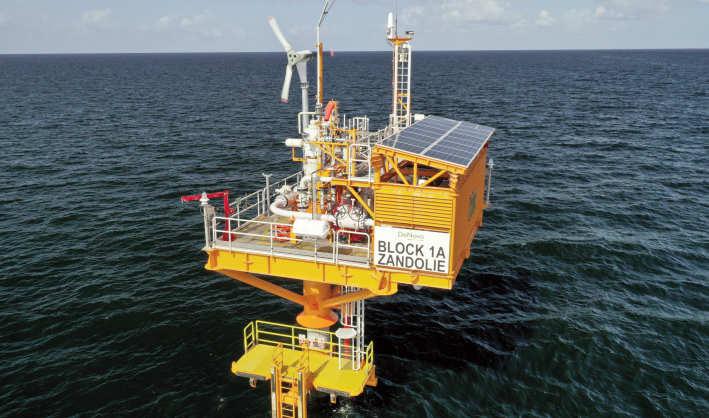
James Larnder, managing director, Aquaterra Energy, discusses how the Middle East is transitioning towards renewables and green hydrogen as well as a more sustainable oil and gas sector, exploring new engineering and procurement approaches.
SINCE THE MID-TWENTIETH century, the Middle East’s oil-and-gas boom has been one of the world’s defining economic success stories. Now, as we embrace a global energy transition, companies in the region are pivoting to become new forms of energy superpowers. They have no intention of relinquishing the winning positions they have built for themselves, and nor should they.
As a new-look Middle Eastern energy sector emerges, however, it may be more than the energy sources that change. There is reason to think the future is one that leans more heavily and readily on international supply chains, particularly for offshore
developments, in a mutually beneficial exchange.
A tale of two transitions
The energy transition – do not let the definite article fool you; there has never been a
singular one-size-fits-all energy transition. In the Middle East, there are at least two parallel transitions taking place, each equally important.
On the one hand, there is the transition to new energies. Leaders know that the region’s hydrocarbon revenues will not last forever at current levels, and the region is blessed with abundant sun and wind potential for renewables. The UAE aims to generate 50% of its electricity from renewable sources by 2050 and Saudi Arabia plans to install 58.7 GW of renewable energy capacity by 2030.
Moreover, there are opportunities for the region to recreate its status as an energy exporter through new markets such as green
There has never been a one-size-fits-all energy transition.”
Energy Transition Issue 4 2023 oilreview.me 15
An offshore modular platform.
Image
Credit: Aquaterra Energy
hydrogen. The key ingredient for commercial green hydrogen is cheap and plentiful renewable electricity, which the region is primed to deliver. For this reason, some tip the Middle East to become the world’s green hydrogen hub.
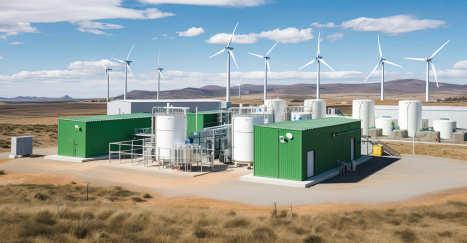
However, the allure of the new shouldn’t blind us to the transition opportunities available with today’s methods and technologies. In its Stated Policies Scenario (STEPS), the IEA does not expect oil demand to peak until the mid-2030s, and envisages fossil fuels will still account for 60% of the global energy mix by mid-century. Oil and gas – and Middle Eastern oil and gas specifically –will be with us for decades to come, but that doesn’t mean that nothing will change.
The second transition is that within the existing energy sector. It is a transition to a more sustainably minded oil and gas sector that is rigorous in its operational emissions and efficiency – as well as cost. It is a global trend in the sector of course, but one that stands to make a big difference in the Middle East by virtue of the region’s immense scale in the energy world.
For example, the region is increasingly getting to grips with a rising number of brownfield projects reaching the end of their expected lifespan over the next few years. While some of these will need to be retired and decommissioned, for many others the region increasingly recognises that there are compelling financial and environmental reasons to extend the life of these.
By maximising the lifespan of existing sites, the need for new ones can be minimised, providing a dual benefit of reduced costs and emissions. In the coming years, brownfield projects may even be at the forefront of the energy transition in the Middle East with the potential for CCS projects, to use these depleted reserves to store sequestered carbon dioxide.
CCS also provides a compelling argument for the effective decommissioning of wells in
order to leave them open to future carbon storage applications. In this respect, working with service companies from regions such as the North Sea, where decommissioning is as common as new commissioning, could provide added expertise in ensuring previous wells are decommissioned with CCS applicability baked in from the start.

In with the new
These transitions are accompanied by a gradual one in business practices and culture wherein a generation of Middle Eastern business and engineering talent has worked on and studied energy projects all over the world. Right now, nearly 59,000 Saudi Arabian students are studying abroad, including more than 30,000 in the USA and 8,000 in the UK. Over time, this allows for cultural exchange and an openness to working with international businesses.
Together, these shifts open the door for new engineering and procurement approaches – in both new and heritage offshore energies.
For example, operators which have taken the same broad approach to drilling literally hundreds of wells offshore are now more open to alternative methods, such as deploying modular platforms installed with jack-up rigs for increased efficiency and time to first-oil and employing riser analysis techniques honed in environments such as the North Sea.
By using modular, flexible designs, these platforms can be adjusted not only to the
needs of the field but can save up to 30% in steel weight over traditionally designed jackets. Local content requirements can be satisfied by using the vast array of fabrication facilities in the region while also slashing transport-related emissions that would be created by importing a platform or componentry from elsewhere. Emissions can be reduced even further if these materials are sourced in-region – at a time where the Middle East is also being touted as a potential hub for the nascent green steel industry.
In this way, the oil and gas sector’s Middle Eastern decarbonisation drive can continue, but this approach also sets the region up for success in new energies. The same smart offshore fabrication and installation approach can be applied to the region’s future offshore wind sector, with potential locations in the Red Sea, Persian Gulf, and Gulf of Oman, which in turn could create new opportunities for green hydrogen production through colocation. That’s not to mention the potential for carbon capture and storage (CCS) in depleted reservoirs, which will surely benefit from the novel engineering being done today in the North Sea.
Embracing change and operating efficiently and sustainably within oil and gas while investing in diversification efforts, offers a blueprint for long-term success in the region. To achieve this, operators need supply chains that can help them meet their production targets, reduce costs, maintain high safety and environmental standards, and support the development of local content and expertise. Suppliers who can deliver on these requirements will find themselves in high demand. n
James Larnder, managing director, Aquaterra Energy.
Energy Transition 16 oilreview.me Issue 4 2023
These shifts open the door for new engineering and procurement approaches.”
Image Credit : Aquaterra Energy
The Middle East has the potential to become a green hydrogen hub.
Image Credit : Adobe Stock
EPC contractors thrive in busy Gulf energy market
THE WORLD’S BIG engineering, procurement and construction (EPC) contractors have long looked to the Middle East as a regular source of work and major projects.
That has not changed, even with all the seismic shifts taking place in the global energy economy, as countries, governments, corporations and households together explore climate-friendly alternatives to traditional hydrocarbons.
Major contract awards in recent months underscore the continued aggressive roll-out of new energy infrastructure across the region, and highlight the rising significance of climate-mitigation measures.
Saudi Arabia, Kuwait, Iraq, Qatar and the UAE are all in the process of raising oil and gas production capacity significantly to meet projected world demand.
It means sustained work for well-known players such as Saipem, Fluor, CB&I, Worley and McDermott, with strong competition from a roster of Asian rivals, including big South Korean names like Samsung Engineering, Daelim Industrial, SK Engineering and Daewoo Engineering.
It has also resulted in a spillover of work for smaller, niche contractors and suppliers as well, driving a sustainable, competitive and healthy market.
Saudi Arabia
As ever, ambitions are perhaps unrivalled in Saudi Arabia, which has seen EPC firms battle it out for lucrative mega contracts.
Aramco recently unveiled record income of US$161.1bn in 2022 — its highest annual profits as a listed company — which will help drive a swathe of new projects.
It has embarked on the largest capital spending programme in its history — last year its 2022 capex rose by 18% to reach US$37.6bn.
Major projects underway will have a material impact on output, which reached 13.6 million barrels of oil equivalent per day (boed), including 11.5 million barrels per day (bpd) of total liquids in 2022.
Construction and engineering activities for the Marjan and Berri crude oil increments continue to progress, and are expected to add production capacity of 300,000 bpd and 250,000 bpd, respectively, by 2025.
The Zuluf crude oil increment is still in the engineering phase, and is expected to provide a central facility to process a total of 600,000 bpd of crude oil from the Zuluf field by 2026.
Construction activities are also continuing on the Dammam development project, which is
expected to add 25,000 bpd and 50,000 bpd of crude oil by 2024 and 2027, respectively.
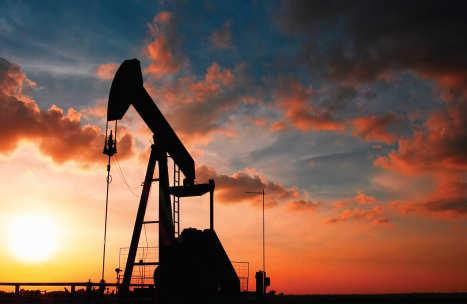
New entrants
Some less familiar EPC names are also picking up jobs in this thriving marketplace, including a number of Chinese contractors hungry for work, and challenging the more established players.
One of Aramco’s current crop of projects is the Safaniya offshore increment development, for which China Offshore Oil Engineering Co. (COOEC) is reported to have landed a US$1bn contract for EPCI work, according to various sources.
Another name to enjoy recent success is Fisia Italimpianti, a subsidiary of the Webuild Group, and a leader in water treatment and desalination plants.
It won two contracts with Aramco in May, which were worth a combined value of US$439mn for the construction and management of a water treatment plant for the Zuluf onshore oil facilities.
A healthy deal pipeline for engineering procurement and construction (EPC) work in the Middle East Gulf bodes well for energy contractors, writes Martin Clark.
The Dammam development project is expected to add 25,000 bpd and 50,000 bpd of crude oil by 2024 and 2027, respectively.”
EPC Issue 4 2023 oilreview.me 17
Saudi Arabia, Kuwait, Iraq, Qatar and the UAE are all raising production capacity to meet projected world demand.
Image Credit : Adobe Stock
The EPC component, worth US$327mn, includes the construction of a plant for the Zuluf central processing facilities that are required for the onshore scheme, located in eastern Saudi Arabia.
Abu Dhabi
Not all of the recent EPC contract activity has been in Saudi Arabia, however, thanks to many other significant projects dotted throughout the Gulf.
In the UAE, ADNOC Logistics & Services recently landed an EPC contract, worth almost US$1bn, for the construction of an artificial island linked to the Lower Zakum offshore field.
It is the first major award since ADNOC L&S was listed on the Abu Dhabi Securities Exchange.
Around 75% of the contract value is expected to flow back into the UAE economy, supporting a growing network of local suppliers and contractors.
Lower Zakum is one of Abu Dhabi’s flagship projects to boost oil and gas production capacity.
National Petroleum Construction Co (NPCC) has also enjoyed recent EPC success, securing a US$162mn contract from Abu Dhabi National Oil Company (ADNOC) for installation of various facilities.
Earlier in the year, NPCC also landed work on the multibillion-dollar Hail & Ghasha sour gas project, working alongside Saipem and China Petroleum Engineering and Construction Corporation (CPECC).
Samsung Engineering, Technip Energies and Tecnimont S.p.A. also announced work on the Hail & Ghasha project at the start of the year.
Major EPC projects awarded, 2023
Qatar awards
In May, Technip Energies and Consolidated Contractors Company (CCC) won an estimated US$10bn engineering, procurement, construction and commissioning (EPCC) contract with QatarEnergy for the onshore facilities of its North Field South Project (NFS).
The award covers the delivery of two
liquefied natural gas (LNG) mega trains, each with a capacity of 8mn tons per annum (Mtpa), plus a large CO2 carbon capture and sequestration (CCS) facility.
The project will boost Qatar’s total LNG production from 110 to 126 Mtpa.
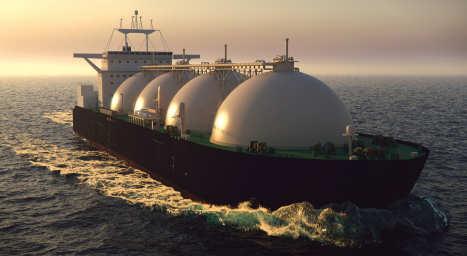
The integration of CCS into the project also illustrates the growing importance of climate mitigation into the work of EPC contractors in 2023.
At the start of the year, Samsung Engineering was also successful in securing a contract for an ethylene unit and utilities on the Ras Laffan Petrochemicals Project in Qatar, 80 km north of Doha.
The project — being built by Ras Laffan Petrochemicals, a joint venture of Qatar Energy and Chevron Phillips Chemical — will be one of the world’s largest ethylene units with capacity of 2.08 million tonnes per year. n
Project
ADNOC January NNPC, Saipem, CPECC Pre-construction works for offshore facilities for Hail & US$60mn Ghasha gas development project
Saudi Aramco Base Oils Company February Petrojet Yanbu facility expansion to raise base oil US$149mn (Luberef) production capacity
Middle East client April L&T Engineering Hydrocarbons Multiple packages for offshore facilities and installations More than integration with existing US$850mn
Qatar Energy May Technip Energies/CCC Two 8 MTPA LNG megaytrains and associated gas US$10bn treatment facilities for North Field South (NFS) project
Aramco May China Offshore Oil Engineering EPCI for 13 jackets for Safaniya offshore increment project Company (COOEC)
Aramco May Fisia Italimpianti Construction of water treatment plant for US$327mn Zuluf onshore oil facilities
ADNOC June NNPC Installation of seven jackets US$162.3mn
ADNOC Offshore June ADNOC L&S
STEP Polymers SPA (Sonatrach) June
Aramco/TotalEnergies June
Aramco/TotalEnergies June
Source: Company statements, press reports
Dredging, land reclamation and marine construction of US$975mn an artificial island for the Lower Zakum offshore field
Petrofac / HQC Petrochemicals complex, Arzew industrial zone US$1.5bn
Hyundai Engineering & Amiral petrochemicals complex, mixed feed US$5bn
Construction cracker and utilities
Maire Tecnimont Amiral petrochemicals complex, derivatives unit and US$2bn polyethylene units
The Ras Laffan Petrochemicals Project in Qatar will have a capacity of 2.08mn tonnes per year.
EPC 18 oilreview.me Issue 4 2023
Lower Zakum is one of Abu Dhabi’s flagship projects to boost oil and gas production capacity.”
Image Credit : Adobe Stock
Client Date
Contractor
announced
Value
Cleaning up oil sludges
THE TWO-YEAR GULF War that was waged by a 35-country military coalition in response to the Iraqi invasion of Kuwait in 1990 achieved its military objectives, with the American-led liberation of Kuwait in February 1991. However, it left an environmental disaster in its wake. As the Iraqi military retreated from Kuwait, they adopted a scorched earth strategy, setting fire to more than 700 oil wells. The fires started in January and February 1991, and the last one was not extinguished until November. Eventually, privately contracted crews extinguished the fires. However, the fires had burned for

approximately 10 months, causing widespread pollution.
Searching for a solution
This contamination was to be no simple clean-up operation, with the diverse composition of soils causing different contamination problems. Wet oil lakes, dry oil lakes, and solid tarcrete remained depending on absorption levels, length, and severity of the exposure.
After the UN awarded US$2bn in 2012 to address this environmental disaster, Kuwait Oil Company (KOC) announced plans four years ago to execute three projects to cleanse millions of cubic metres of oil-contaminated sand. One was designed to treat nine million cubic metres of contaminated sand in the south, another for four million cubic metres in Al-Rawdatain, Al-Sabriya, Umm Al-Aish (north), and a third would treat four million cubic metres of sand. However, to date, only around 12% has been cleared.
Many technologies and remediation
techniques have been tried, including thermal desorption, chemical oxidation, bioremediation and soil washing, According to the Kuwait Oil Corporation (KOC), the only technology that has achieved even limited success is bioremediation. The limitation KOC found with this technique is that it is unsuitable for oil contamination levels above 7% requiring substantial energy in the form of mechanical handling to segregate homogenise contaminated sands. To treat contamination above 7%, the sands must also be first diluted, increasing the volume of material to be treated. Such treatment is impossible to achieve in situ, so KOC are currently planning to excavate 17mn tonnes of contaminated sands, potentially transporting over one million truck loads around 100 kilometres to two processing centres. There it will be segregated, homogenised and potentially diluted with clean material. Then they have to grow the bacteria to eat the oil over several months by regularly mixing in nutrients, maintaining a stable temperature,
An innovative greentech process using water could provide an environmentally-friendly solution to clean Kuwait’s heavy oil contamination.
This contamination was to be no simple cleanup operation.”
Oil Spill Issue 4 2023 oilreview.me 19
The oil well fires in Kuwait left environmental destruction in their wake.
Image Credit : Adobe Stock
and keeping the sand moist; not an insignificant challenge where temperatures vary between 5-50oC.
The carbon footprint of those operations will be colossal and, to make matters worse, the bacteria used in bioremediation will convert the hydrocarbons to greenhouse gases.
Apparently KOC’s strategy for more highly contaminated solids is simply to bury the material in landfill, envisaging digging pits to hold 2.2 million cubic metres of oilsoaked sand. This video from KOC explains. https://www.youtube.com/watch?v=2QYGv ZMnej8
A water-based answer
It is clear that a new approach is required. After some 12 years of research and development, UK company Envorem has developed an innovative new technology that uses a little-known property of water to process production sludges, cleaning the solids and recovering the entrained oil without generating emissions. The technology was developed in collaboration with the University of Brighton who, through Doctor Anastasios Georgoulas, are one of the world leaders in the analysis and modelling of multiphaseflows with phase-change, heat and mass transfer including cavitation.
Envorem has combined established techniques with hydraulic shock and cavitation, where bubbles are created by the vaporisation of water, a phenomenon copied from the natural world. Cavitation can be generated ultrasonically, electrically, or physically and is widely known as a parasitic effect that destroys propellers on ships and the impellers of pumps. The collapse of cavitation bubbles is so powerful it liberates metal fragments from the surfaces.
Envorem harnesses these forces to create
a water-based system that disassembles the sludge and strips oil contamination from particle surfaces. At the core of the system, millions of cavitation bubbles are artificially generated within the target material. These bubbles collapse with incredibly high forces, forming microscopic water jets and shock waves that impact surfaces of solids and generate localised temperatures of up to 3,000oC. The great news is that because all cavitation occurs at a microscopic level, the energy is highly focused, making the process highly energy-efficient and very fast. Furthermore, as water is only used for energy transfer, any type of water can be used including seawater or produced water.
contaminated soil, sludge extracted from a pit and, directly from tankers.

The highly successful pilot confirmed the viability and performance of this innovative Greentech. The pilot proved the technology generates a fraction of thermal treatment emissions and is cheaper and faster. The pilot technology has since been further enhanced and is used as a large scale demonstration system, showing the industry that these materials can be economically treated without generating emissions.
In November 2022 Envorem MD, Mark Batt-Rawden, announced that Envorem would build the world’s largest mobile greentech system for treating huge volumes of sand and sludge. The news of this world first was greeted with applause at an international gathering in Saudi Arabia where Batt-Rawden was a keynote speaker.
A tried and tested methodology
The technology has already been tested processing at 50 tonnes of sludge per hour –some 10 times the capability of thermal treatment plants and using 95% less energy, all in a system that is small enough to be mobile; contained in several trucks. This means KOC could potentially treat most of the material at source rather than transporting it. A fixed plant could easily be scaled to process 10 or more times this figure.
Initial tests were conducted using a benchscale system. The system was then scaled up to a 50-tonne per hour test to verify performance at high throughput. Subsequently, Envorem was awarded a pilot project with PDO, Oman’s national oil company, as a field trial, processing highly
Financed by the UK Government Innovation Department (IUK) and private investors, the build is now well underway and is scheduled for completion in November 2023. The system will process an unparalleled volume of material, up to 100,000 litres of liquid sludge every hour or 25 tonnes of soil per hour – all without generating any emissions.
Mark Batt-Rawden commented, “It brings the seemingly impossible clean up challenges facing the oil industry within reach, both technically and financially. It can also significantly reduce the environmental impact of oil production, whilst simultaneously saving costs – a true win-win. For oil producers seeking to improve their ESG profile, using Envorem’s technology contributes to Goals 12,13,14 and 15 of The United Nations Sustainable Development Goals”.
For the clean-up programme in Kuwait, this mobile technology could be significant game-changer in terms of cost, timescales and crucially, the programme’s emissions. ■
The new technology provides an environmentally-friendly way of cleaning up oil production sludges.
Oil Spill 20 oilreview.me Issue 4 2023
Envorem was awarded a pilot project with PDO, as a field trial.”
Image Credit : Envorem
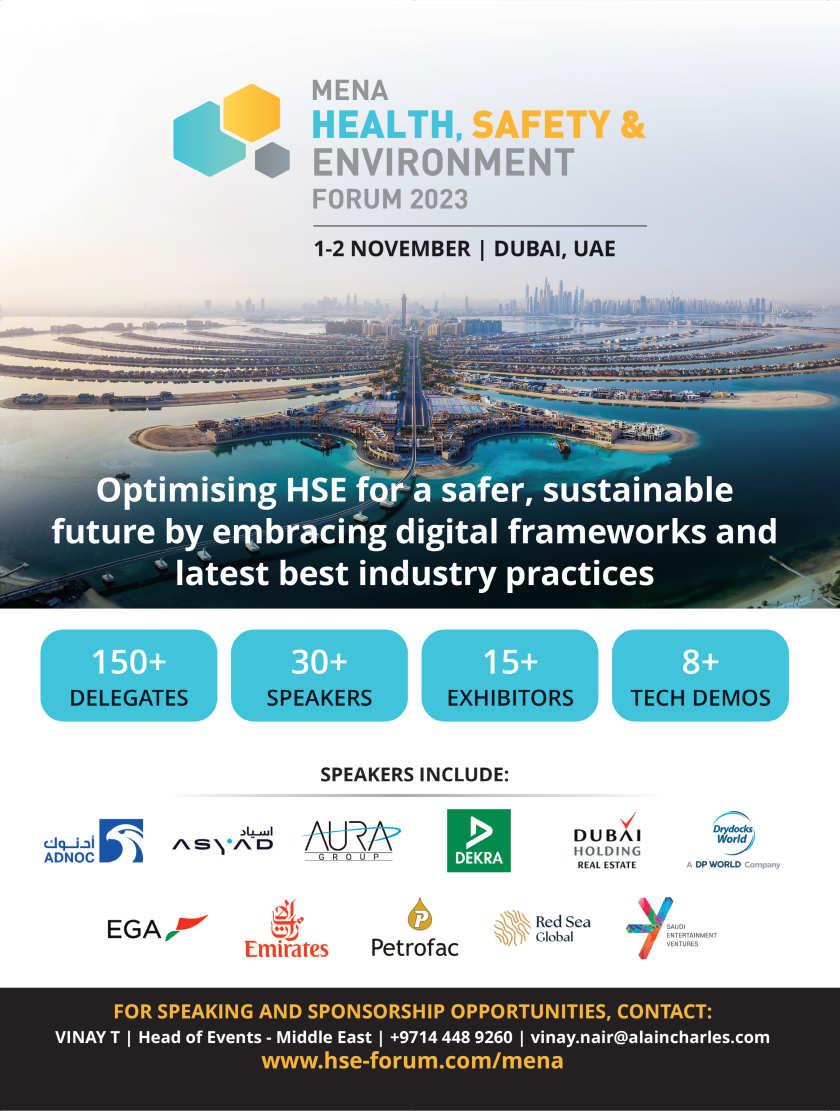
A customer-centric approach for hydrogen projects
THE MARKET FOR clean hydrogen and its derivatives (such as green ammonia, low-carbon steel, and synthetic fuel for aviation) is growing rapidly, with the number of announced projects up by more than 75% since the end of 2021. Traditional utilities, renewable energy developers, oil and gas companies, chemicals producers, and original equipment manufacturers are among those trying to gain first-mover advantage.
The economics of getting these projects off the ground will remain challenging for at least a decade, due to high capex costs and the variability in the price of carbon. Most clean hydrogen projects will still need regulatory support to be economically competitive with alternatives. This limits early projects to niche areas where incentives or other support levers are available, or where customers are willing to pay a green premium.
In our experience, hydrogen developers are familiar with the economics around regulatory support and other incentives. They also understand the need for finding the right locations (with proximity to resources and supporting industry) and the right partners. The missing ingredient, we often find, is that they are less attuned to another factor that’s critical for success: identifying customers that are willing to pay a green premium and securing long-term offtake agreements with them.
Securing offtake customers
The companies developing clean hydrogen projects have focused on developing their engineering and project management capabilities. Securing a base of offtake customers hasn't been a critical capability of their core business, so it is a new muscle to build. But getting potential customers to commit to long-term contracts is essential for project success. It is difficult because customers expect prices on green derivatives to decline over time, and they don’t want to be locked into higher prices. Also, many hydrogen producers, particularly utilities that
are used to selling into commodity markets, lack the specialised sales experience required to close these deals.
Three steps to develop a customer-centric approach
Our work with early movers suggests three important steps in developing a customercentric approach that are key to unlocking a successful clean hydrogen project. Taking this kind of approach has helped companies identify customers willing to pay a premium and commit to long-term contracts, which in turn has enabled hydrogen producers to commit to investment decisions.
1. Focus on high-potential segments and customers. Many hydrogen developers take a broad approach to their potential customer base. But in these early days for the market, it’s more efficient to identify the customer segments willing to pay the green premium –the price difference between traditional and low-carbon hydrogen. Once these segments are identified, developers can then narrow the search to find the highest-potential customers to make efficient use of lean sales teams. Developers might survey customers about their willingness to pay a green premium, but this has its limitations. Purchasers may not know how their company’s willingness to pay a premium could change over time, and frequently the decision maker for a commodity like ammonia may be in procurement, while the decision to pay a green premium rests somewhere else, often in the C-suite.
2. Explore partnering with customers. Hydrogen producers that are not also customers of hydrogen – utilities, for example – should consider deepening their relationships with their offtake customers, like the partnerships we have seen in more established commodities such as grey ammonia. This helps secure long-term agreements and can help developers gain a better understanding of the challenges these customers face in selling a greener product and recovering the premium they have paid. Partnerships can also help hydrogen
producers develop their commercial capabilities, as they learn more about hydrogen’s economics and supply chain, while they develop their operational capabilities.
3. Build the customer mindset in your organisation. To achieve these goals, hydrogen producers are becoming more customer-centric across their organisations. Some need to build new skills because companies that trade mostly in commodities typically have required limited sales capabilities. With a shift toward more differentiated products, they need to train the sales force to position their product as unique and valuable, form direct relationships with customers, and establish partnerships.
Developing these customer capabilities requires some of the same muscles that hydrogen producers have used in designing their clean hydrogen projects. A truly customer-centric organisation takes a systemic approach, talking to customers to gain a better understanding of the market and their long-term needs. Understanding customer priorities often leads companies to reconsider how they design their products and services and take them to market.
This may represent a cultural change for many utilities and other industrial organisations that have not worked at this level of customer engagement before. Instilling a customer-centric culture guides actions at all levels of the organisation and sheds light on where new learning is necessary.
To summarise, while the market for hydrogen is destined to grow, the path to success for any individual clean hydrogen project is far from certain. Access to the right sites, renewable energy resources, and partnerships will remain important, and given the limited supply of all three, assertive action is likely to generate a first-mover advantage. Adopting a customer-centric approach is a key ingredient in making the difference between failure and success. ■
Raja Atoui, partner, Bain & Company Middle East & Per Karlsson, partner, Bain & Company Nordics, discuss how to unlock hydrogen projects in the Middle East with a customer-centric approach.
Hydrogen 22 oilreview.me Issue 4 2023
Latest OSV trends highlighted at industry event

THE OFFSHORE SUPPORT Vessels Conference, which took place in Abu Dhabi, attracted industry leaders, experts, and key stakeholders. The event served as a platform to showcase the latest offshore oil and gas exploration and production projects, while shedding light on innovative commercial trends that would shape the future of the offshore support vessel industry. With more than 200 attendees and experts in attendance, the conference brought together decision-makers in the marine services, technical services, marine logistics, quality assurance, project management, and marine operations sectors.
The event came at a pivotal time for the offshore support vessel industry, driven by various market factors and significant growth opportunities. According to Fortune Business Insights, the global OSV market is projected to grow from US$14.46bn in 2021 to US$23.6bn by 2028. Additionally, as reported by Mordor Intelligence, the Middle East OSV market is expected to experience a compound annual growth rate of 5% over the next five years.
Several key projects and developments further underscored the increasing demand for offshore support vessels in the region. Saudi Aramco, for example, announced plans for a 50% increase in the size of its offshore support vessels, raising the total number of crafts to approximately 450. Abu Dhabi National Oil Company (ADNOC) recently awarded a US$548mn (AED2.01bn) contract for the construction of a new main gas line at its Lower Zakum field, driving the need for offshore support vessels. The initiation of 13 new offshore LNG projects by Qatar Energy and the launch of a US$594mn (KD 181mn) offshore drilling operation by Kuwait Oil Company has also contributed to the surge in demand for offshore support vessels.
The event saw Fueltrax and the Saudi National Maritime Academy enter into an agreement to jointly investigate offshore vessel optimisation and sustainability technology training for the upcoming generation of professional mariners.
Recognising the significance of crew involvement in the successful implementation of sustainable practices at sea, the initiative aims to begin with cadets who are preparing to embark on their careers as deck and engineering officers. The objective is to introduce these cadets to fuel optimisation tools that they will encounter during their offshore operations, thus equipping them with the necessary knowledge and skills to actively contribute to sustainability and fuel optimisation initiatives on board.
Another significant MOU was signed between Ascenz Marorka and Greenfield Marine Technologies. The objective of the MOU is to provide, to the offshore industry, a comprehensive digital sustainability / ESG package combining Ascenz Marorka's vessel performance optimisation solutions to reduce vessels' emissions through automatic sensor data collection and artificial intelligence, and
Greenfield Marine Technologies' digital platform. This looks at safety of offshore personnel and the environment through data analytics using engagement, training and motivation of people as a tool. Both partners agree that tackling the environmental challenges in the maritime industry requires both modern technology and engaged crews.
Organised by GM events, the Offshore Support Vessels Conference was sponsored by The Dubai Council for Marine and Maritime Industries, ADNOC, participating as the "Gold Sponsor" of the event, Ascenz Marorka and the National Maritime Academy (NMA). The conference served as a crucial platform for industry professionals, shipbuilders, charterers, technology providers, and regulatory organisations to exchange ideas, collaborate on solutions, and explore the potential for a successful and sustainable future in the offshore support vessel industry.
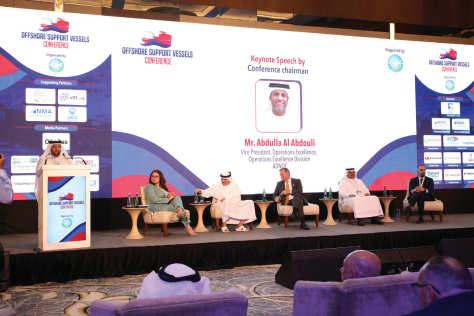
Issue 4 2023 oilreview.me 23
The event debated the future of the OSV industry.
Offshore Logistics
Image Credit: GM Events
Charting the course of alternative maritime fuels
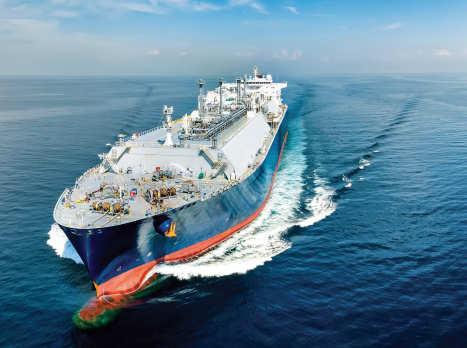
WITHIN THE MARITIME industry, the pursuit of alternative fuels has emerged as a paramount endeavour, driven by the urgent need to mitigate environmental impact and achieve decarbonisation targets. While the notion of electrification appears promising, its application encounters notable limitations, particularly in the realm of deep-sea shipping. Thus, an exploration of alternative options becomes imperative. The DNV report, titled Transport in Transition, explores these routes for the industry.
Hydrogen
Hydrogen and its derivatives show great promise in decarbonising maritime fuel. However, due to its low energy density and space requirements, its uptake is expected to be limited in deep-sea ship segments that rely on 2-stroke engines. Conversely, 4-stroke engines are being developed for the short-sea segment, offering a viable option for hydrogen propulsion. Proton-exchange membrane fuel cell (PEMFC) technology, used to convert hydrogen to electricity, is relatively mature and holds significant potential.
Nevertheless, the lack of dedicated bunkering facilities for hydrogen poses a challenge. Storage options include pressure, liquefaction (LH2), or incorporation in LOHC (liquid organic hydrogen carrier). Availability of hydrogen in suitable temperature and pressure ranges for ships is also a concern. Furthermore, the safety-related properties of hydrogen, such as its flammability and self-ignition potential, require additional safety systems and practices for its effective use in ships.
Ammonia
Ammonia has gained widespread interest as a zero-emission fuel for shipping. It offers easier storage compared to hydrogen and does not contain carbon. Although engine technologies for ammonia are not yet mature, significant development efforts are underway, and both 2-stroke and 4-stroke engines using ammonia as fuel are being developed. Safety remains a key challenge due to ammonia's toxicity.
Ammonia is typically stored as a liquid at
low temperatures or pressurised at room temperature. While there is no dedicated bunkering infrastructure for ammonia, existing ammonia terminals could potentially serve as reload terminals for ammonia bunker vessels or barges. Safety measures, leak detection, and containment are crucial for handling ammonia effectively. Collaboration with technology developers and adherence to safety guidelines are vital for managing ammonia as a maritime fuel.
Methanol
Methanol has garnered increasing interest in recent years. It can be handled and transported under normal temperatures and pressures, and fossil-based methanol is currently available for bunkering. Plants for producing e-methanol are under development, enabling GHG reduction benefits. Dual-fuel methanol engines are already in use, and retrofit options for 2-stroke engines are available. Manufacturers are also developing technologies for 4-stroke engines and fuel-cell technologies using methanol.
Similar to ammonia, there is no dedicated bunkering infrastructure for methanol. However, existing methanol terminals can be utilised as reload terminals. Safety measures, such as double-wall piping, nitrogen systems, and fire detection systems, address the risks associated with methanol as a low-flashpoint fuel.
As the maritime industry continues to explore various alternative fuels to achieve decarbonisation goals, hydrogen, ammonia, and methanol offer different opportunities and challenges. While electrification faces limitations, hydrogen derivatives show promise for short-sea segments, and ammonia holds potential for deep-sea shipping, with both requiring careful safety considerations.
Methanol, with its existing usage and ongoing technology development, presents a versatile option for various ship applications. Collaboration, adherence to safety guidelines, and the development of dedicated bunkering infrastructure are crucial for the successful integration of these alternative fuels in the maritime industry's decarbonisation journey. n
Alternative fuels could play a key role in enabling the maritime industry to achieve decarbonisation goals.
The maritime sector is looking towards innovative solutions to revolutionise the industry’s fuel landscape. A new report from DNV explores these issues, as Minhaj Zia reports.
Shipping 24 oilreview.me Issue 4 2023
Image
Credit: Adobe Stock
Measurement challenges in EOR
ENHANCED OIL RECOVERY (EOR) is a method used in oil and gas production to increase the recovery factor of producing oil and gas wells. It involves the use of methods to increase and sustain hydrocarbon production for longer periods through injection of fluids, thermal energy (heat) or chemicals.

Conventional oil and gas production typically relies on reservoir pressure to help drive fluids up the well bore during production. This natural pressure-driven process usually allows for years of production, but as more and more fluids are produced, the pressure in the reservoir decreases. This reduces the natural driving force and results in lower production rates over time. This eventually leads to the reservoir pressure dropping below the minimum required to overcome the pressure loss of the production infrastructure and no more hydrocarbons flow. Depending on the reservoir starting conditions, this could result in substantial hydrocarbons left in the well compared with the original contents, i.e. a low recovery factor.
Furthermore, the produced fluids themselves may be partially immobile and require some form of energy to aid production
An example can be seen in heavy oil and bitumen production in Canada. The in situ hydrocarbons are extremely viscous and steam is used to heat the fluids and reduce its resistance to flow by lowering the viscosity. Chemicals
can be used in place of heat in some locations. Regardless, by increasing pressure through fluid injection or mobility through heat or chemicals the effect is to have an enhanced recovery of the quantity of hydrocarbons produced over the lifetime of the field.
The use of EOR techniques can be expensive, and it is important to fully quantify the effectiveness of a technique for an application, from both an overall cost perspective and also to ensure it is being utilised optimally. Accurate flow and physical property measurements of the production and EOR fluids are vital to obtain this information and make correct decisions on production rates.
as single phases. Equations of state can be used to calculate physical properties at operating conditions, and although they won’t be as accurate as water physical properties, they will still deliver an overall low uncertainty for those fluids. However, often it is not as straightforward as that, and consideration must be given to where these fluids will come from.
The fluids injected in EOR are typically recycled from the production process and therefore are never a pure process stream. The impurities have a couple of major effects on measurements as they affect the physical properties used for some measurement technologies and calculations, and the phase behaviour at the measurement point or reservoir conditions. This could include the presence of a second fluid phase which brings inaccuracies into measurements and also changes in the expected way the EOR method works within the reservoir.
Injecting fluids
Common fluids injected to increase reservoir pressure are water, carbon dioxide, nitrogen and natural gas. Water can be straightforward to measure, and its physical properties are well known over a wide range of temperatures and pressures. The other fluids are gases and can easily be measured
In thermal EOR, the main heat transfer mechanism is injected steam in the reservoir which increases the mobility of hydrocarbons through reduction of the fluid viscosity. This can be completed as a continuous operation or through cyclic steam injection where hot steam is injected periodically. The steam is generated on site through boiling water and is typically very pure. However, the quantity of steam is not the only important measured parameter here as the quality of the steam,
Dr. Craig Marshall, consultant engineer at TÜV SÜD National Engineering Laboratory, discusses the importance of measurement to better understand, optimise and control the EOR process.
It is important to fully quantify the effectiveness of a technique for an application.”
EOR Issue 4 2023 oilreview.me 25
EOR is used to increase the recovery factor of producing oil and gas wells.
Image Credit : Adobe Stock
i.e. is it wet or dry steam, can also greatly impact the process efficiency.
Steam can transfer energy to the reservoir through its temperature change (sensible heat) but also its phase change (latent heat). If some of the steam has already condensed because of the long distance from the central generation point, poor insulation, or some other factor, then there is less energy available to transfer to the reservoir fluids. This not only makes the whole process less efficient, i.e. more wet steam is required to do the same work as dry steam, but the presence of a second phase (condensed water) at the measurement point can impact the measurement accuracy. Again, this adds to the poor data collection which is used to base important decisions on.
Injecting chemicals
Finally, in chemical EOR, various chemicals are injected into the well typically in diluted form to provide a chemical means of improved production. An example is using chemicals that mix with naturally occurring species in the hydrocarbons to produce surfactants that increase mobility. Another one is injecting polymers with water into the reservoir to produce a high viscosity fluid able to ‘push’ bulk hydrocarbons ahead of it,
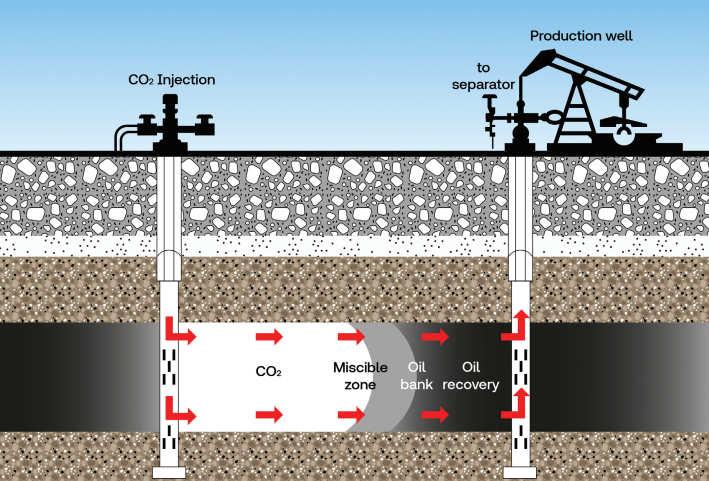
where regular water would simply mix or break through the reservoir fluids.
The challenge here for measurement is the effect of low Reynolds numbers on measurements and the potential changing physical properties of the polymer mix. These can lead to inaccurate measurements if they are not considered and corrected for. The chemicals themselves are not recycled from the production process like other fluids and have to be sent to site. They can be very expensive, and therefore it is vitally important to ensure they are being used optimally in any EOR process.
In summary, EOR is a vital process to help deliver on maximising economic recovery from any oil and gas well. Currently, it plays a huge role in extending field life and helping to realise the potential in harder to produce unconventional resources. Like any application though, the fluids, physical properties and operating conditions must be measured accurately in order to better understand, optimise and control the process and to ensure it is cost-effective.
Measurements are not without their challenges but understanding where the sources of error can be found will help end users of the EOR projects and measurement technologies to mitigate and reduce them. n
 Typical enhanced oil recovery system using injected CO2
Typical enhanced oil recovery system using injected CO2
EOR 26 oilreview.me Issue 4 2023
EOR is a vital process to help deliver on maximising recovery from any oil and gas well.”
Image Credit : TÜV SÜD National Engineering Laboratory.
Dr Craig Marshall, consultant engineer at TÜV SÜD National Engineering Laboratory.
Image Credit : TÜV SÜD National Engineering Laboratory.
Keeping remote oil and gas assets connected
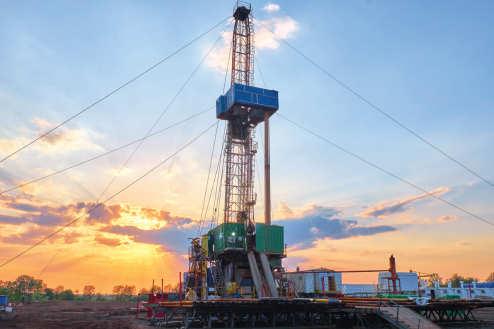
In the oil and gas sector, interoperability is key to keeping remote and offshore assets connected. Alastair MacLeod, CEO of satellite-focused connectivity specialist Ground Control, examines the challenges oil and gas businesses face creating a network which is secure, cost-effective and ultimately operates as one.
THE INTERNET OF Things (IoT) has already enabled unprecedented levels of connectivity, data collection, and analysis across industry, and the oil and gas sector is no exception. IoT devices can be used to monitor the performance of assets upstream, and to provide real-time view of equipment performance, environmental conditions, safety status, and fleet operations.
But these devices rely on interoperability to function effectively. IoT devices must be able to communicate with each other and other systems, such as cloud-based platforms and data integration tools to deliver increased efficiency, cost reduction and improved sustainability.
Why interoperability matters
In oil and gas, interoperability is essential for ensuring that all hardware and software systems can communicate with each other, regardless of the manufacturer or technology used. As assets are often located in remote locations and offshore, where terrestrial coverage is intermittent or unavailable, it can be difficult to maintain connectivity and monitor performance.
Real-time data exchange between different systems, allows for more accurate and comprehensive data management. This data can also be used to inform predictive maintenance ensuring at-risk parts are replaced before failure, avoiding costly downtime. The early detection of a damaged or faulty pipeline, for example, can save owners millions annually. And the same goes in myriad other examples across the energy
mix where early intervention is crucial.
What is more, interoperability makes it easier to add new systems and devices to existing infrastructure, making it more scalable and adaptable to changing energy needs.
Interoperability challenges faced by the oil and gas industry
One of the most significant challenges to achieving interoperability is communication and integration issues between different hardware and software systems. This can result in inefficiencies, data silos and increased costs.
In addition, interoperability can increase the vulnerability of cyber-attacks. When different systems and devices are connected and exchanging data, it can create new attack vectors that may not have been considered in the design of the original system.
Furthermore, oil and gas assets are often located in remote areas. These areas may experience intermittent or even complete lack
of traditional terrestrial coverage, which can make it difficult to establish a reliable connection for data exchange and remote monitoring.
As an example, a Ground Control customer that operates a major gas pipeline connecting the UK and Europe requires that a series of pressure and temperature sensors are able to provide data to its SCADA (supervisory control and data acquisition) system in order to run production.
If the company can't extract data from two out of three of its data transmission systems, it halts production, and the company is forced to vent the stacks, which is expensive, and disruptive for the local communities surrounding the pipeline terminals.
These sensors are located well out of terrestrial coverage, but because this is critical national infrastructure, the company has gone to the expense of laying a dedicated fibre line for one connectivity option. For their second connectivity bridge,
Interoperability is essential for ensuring that all hardware and software systems can communicate with each other.”
Communications Issue 4 2023 oilreview.me 27
Oil and gas assets are often located in remote areas.
Image Credit Adobe Stock
and the third, failover, option, they chose satellite; specifically an option that was compliant with legacy and IP SCADA protocols, making it ideal for this application.
They have now used this system, while upgrading the hardware regularly, for more than 16 years. In that time, the satellite connectivity has never failed.
The importance of resilient and ubiquitous connectivity
At present, a mere 15% of the earth's surface is supported by conventional terrestrial communications infrastructure, some of which is complex, vulnerable, and expensive to maintain. Satellites in contrast, can provide global coverage and are comparatively resilient – unaffected by, for instance, natural disasters.
In our own blog The role of 5G and Satellite technology in Industry 4.0, we discussed the three key areas where satellite can complement 5G and terrestrial networks, augmenting network reach to include rural, remote areas, embedding redundancy and, of course, additional backhaul capability.
It is often not financially viable to build or maintain the infrastructure required to support remote and offshore assets via terrestrial or fibre connectivity. In fact, a recent survey by Inmarsat found that 91% of business leaders felt satellite connectivity was key to improving the effectiveness of IoT solutions.
Perhaps unsurprisingly then, satellite has become an increasingly popular solution for assets outside traditional terrestrial coverage to ensure reliable, blanket network coverage.
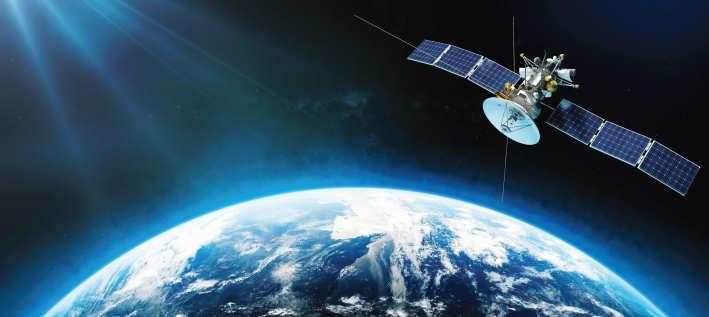
Important considerations for satellite integration
Some integration challenges are regulatory (spectrum allocation and licensing, for example), while others are capital, not least the cost of deploying satellite-enabled
devices. But in short, hardware compatibility and power management are important considerations for anyone looking to introduce satellite IoT modules into their network.
Satellite IoT modules typically use different communication protocols and hardware interfaces than traditional IoT devices, so it is important to ensure that the modules you select are compatible with your existing hardware and software infrastructure. Selecting modules which support the communication protocols and physical interfaces required by your network is key.
organisations evaluating hardware and software solutions consider systems and components that are designed to work together. While not always possible, it is important to consider factors such as compatibility, data exchange standards, and communication protocols. By choosing solutions that are designed to work together, companies can streamline communication and improve efficiency.
APIs provide a standardised way for different systems to communicate and exchange data, while data integration tools enable companies to consolidate and manage data from multiple sources. By leveraging these tools, companies can improve data quality, reduce data silos, and streamline communication between different systems. Simply, APIs and data integration tools are powerful tools for achieving interoperability.
In addition, satellite IoT modules may require different power management strategies due to their reliance on satellite connectivity and potentially long battery life requirements. So it is important to select modules that are designed to operate efficiently in low-power environments, and to implement power management strategies that minimise power consumption and maximise battery life.
Finally – cost. Due to the added complexity and technology required to support satellite networks, satellite modules and indeed satellite airtime, can be more expensive. However, there are several ways this can be integrated within your network to ensure you get the right balance of performance and cost.
Seamless network integration
Thinking about interoperability and integration more generally, it is important that oil and gas
Moreover, cloud-based solutions can play a critical role in enabling remote connectivity for oil and gas systems. By storing data in the cloud, companies can access data from anywhere with an internet connection, enabling remote monitoring and management of systems. Cloud-based solutions also provide a scalable and cost-effective way to store and manage data, enabling companies to optimise energy resources more effectively.
Ultimately, the oil and gas sector has had to cope with managing remote and harsh environments for many years and has done so adeptly, evolving with the technology to support remote management. There will always be challenges of course, but with satellite, issues associated with operation visibility and control could be a thing of the past. With the availability of reliable connectivity anywhere on the planet, oil and gas operators have the chance to turn what was once a major challenge, into a cost saving, and efficiency-bearing advantage. n
Satellite has become an increasingly popular solution for assets outside traditional terrestrial coverage.
Communications 28 oilreview.me Issue 4 2023
Satellites can provide global coverage and are comparatively resilient.”
Image Credit : Adobe Stock
R educing flaring to meet the sustainability agenda
Exploring alternative technologies such as HIPPS can cut down emissions, explains Mohamed Salman - SIS business development manager of Middle East and Africa at Emerson Automation Solutions.
GAS FLARING IS the process of burning natural gas that is extracted alongside oil. This has been a common practice for over 160 years since the beginning of oil production.
Flaring outlook
Gas flaring is done for various reasons including economic and market limitations, inadequate regulation, and a lack of political will. Flaring is used as a safety measure to prevent the accumulation of gases in equipment.

The Middle East and North Africa region is the second-largest flaring region in the world, flaring an estimated 50bn cubic meters (bn cu/m) of gas annually, with Russia and the Caspian region being the largest flaring region, flaring almost 60bn cu/m. In contrast, sub-Saharan Africa flares approximately 35 bn cu/m of gas per year.
Dire environmental costs
Flare designs are usually intended to facilitate complete combustion, which helps reduce the amount of direct hydrocarbon emissions released into the atmosphere. Flaring allows operators to safely manage sudden and significant pressure fluctuations by burning off excess gas and reducing pressure in their equipment. However, this process results in excessive emissions of carbon dioxide and methane into the atmosphere, contributing to the depletion of the ozone layer, acid rain, and ocean acidification.
Since the industrial revolution, ocean pH levels have been decreasing, and this, in turn, has led to increased acidity in seawater. Global warming is also a significant consequence of the increased release of carbon dioxide and methane into the atmosphere resulting from oil fields flaring. The NOAA Global Monitoring Lab reported a record-high global average atmospheric carbon dioxide of 414.72 parts per million (ppm) in 2021, despite the Covid-19 pandemic's economic slowdown. The steady yearly increase in carbon dioxide levels is alarming and highlights the intensification of the natural greenhouse effect caused by human activities.
Carbon dioxide's ability to absorb heat and radiate it in all directions leads to a rise in global temperature. According to the NOAA Global Monitoring Lab, carbon dioxide alone contributed to around two-thirds of the overall warming effect caused by human-generated greenhouse gases in 2021.
This process results in excessive emissions of carbon dioxide and methane into the atmosphere.”
F laring Issue 4 2023 oilreview.me 29
The Middle East and North Africa region is the second-largest flaring region in the world.
Image
Credit: Adobe Stock
Approach to reducing emissions
While eliminating flaring may not be practical, exploring alternative technologies that reduce the dependence on flaring could be a valuable consideration. One effective approach to reducing flaring emissions is to decrease the demand for flaring. Although flaring is necessary for safety and emergency situations that require pressure release from the process, there are now several methods and technologies available to manage highpressure situations and prevent pressure buildup by isolating downstream equipment from the high-pressure source.
One such technology is the High-Pressure Integrity Protection System (HIPPS), which uses electronic and programmable systems to provide a high level of safety integrity. HIPPS is designed to prevent overpressure by shutting off the source and containing the pressure in the upstream side of the system, creating a barrier between the high-pressure and low-pressure sides of the process plant. This tight shutoff not only prevents loss of containment but also eliminates fugitive emissions, making HIPPS the ‘last line of defense’ for safety.
A typical HIPPS system consists of two or three final elements in the series and can shut down within two to three seconds for gas and six to eight seconds for liquids, depending on pipeline pressure, flow rate, diameter, and class. Pressure sensing systems detect the peak pressure surge and initiate the shutdown sequence, with three sensors connected to the logic solver. If the predefined pressure parameters are exceeded, the logic solver shuts down the final elements and the process.
Holistic solution
A solution for HIPPS that covers all aspects of
design, construction, installation, and operation is necessary for comprehensive safety. This solution comprises several components, including solenoids, actuators, DVC controllers, pressure transmitters, DCS logic solvers, and a valve of the user's choice. All components are tested and certified by safety consultants to ensure they meet safety standards. This solution meets the end-user's
specifications and avoids conflicts during validation that could lead to delayed startups.
In today's world, achieving sustainability and reducing carbon footprint is crucial, especially with net zero targets driving the agenda. Compliance with ISO 50001, the global standard for energy management systems, sets high benchmarks and may make some companies eligible for government financial support.
Emerson's portfolio offers intelligent measurement and control solutions, including the Industrial Internet of Things (IIoT), sustainable products, and software that provides actionable insights to reduce emissions and maximise energy management. n

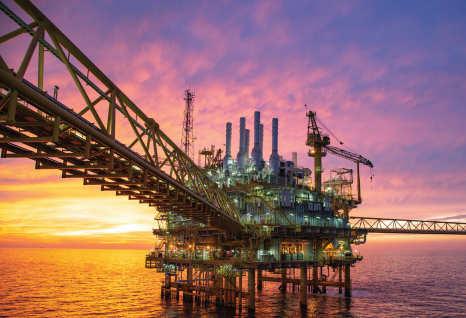 There are several technologies available to manage high-pressure situations and prevent pressure buildup by isolating downstream equipment from the high-pressure source.
There are several technologies available to manage high-pressure situations and prevent pressure buildup by isolating downstream equipment from the high-pressure source.
F laring 30 oilreview.me Issue 4 2023
HIPPS is the last line of defense for safety.”
Image Credit: Adobe Stock
HIPPS uses electronic and programmable systems to provide a high level of safety integrity.
Image Credit: Adobe Stock
Digital drilling brings game-changing benefits
Dany Rahal, VP Digital – MENA at SLB speaks to Oil Review Middle East about how digital drilling solutions can help operators achieve a step-change in efficiency, safety and sustainability.
How are SLB’s digital drilling solutions helping operators achieve optimum performance and safety?
I like to think of it like this, our digital drilling solutions give our customers superior capabilities, and they use them to increase safety and optimise performance. For example, with remote working capabilities enabled by our Delfi™ digital platform, customer teams can achieve what they need to from the comfort of their office or even their homes (directional drilling, monitoring drilling dynamics) enabling easier access to domain expertise. Changes on the drilling envelope or steering instructions can be initiated in a few clicks from the office with the knowledge of the crew. They have the power to instantly
collaborate with other teams and experts across the full process, from planning, engineering, and execution. The rig, enhanced by digital drilling solutions, gives customers the power to automate repetitive tasks, improves efficiency of going on and off bottom by up to 30%, optimises the rate of
penetration (ROP) by up to 25%, and reduces and manages drilling dysfunctions – such as stick and slip or shock and vibrations – by 70%. By giving customers the ability to use data at levels never before achievable, we expand their cognitive capabilities, so they can rapidly explore the impact of their decisions and do it more accurately.
How can digital drilling solutions help operators achieve their sustainability objectives, and to what extent is that a concern for operators these days?
Our industry’s focus and narratives have dramatically changed since the 2015 Paris Agreement and have accelerated exponentially in recent years. Most of us have

Changes on the drilling envelope or steering instructions can be initiated in a few clicks from the office.”
Digital Drilling Issue 4 2023 oilreview.me 31
Digital drilling solutions can help operators increase safety and optimise performance.
Image Credit : Adobe Stock
made commitments to achieving global sustainability objectives. We find customers are aware of scope 1, scope 2, and scope 3 emissions, but many are not always sure what to do about them. There’s truth in the famous quote from Peter Drucker, “If you can’t measure it, you can’t improve it.” And here, digital drilling solutions can help. We can, today, accurately model the emissions for well construction activities. The DrillPlan™ coherent well construction planning solution automates the calculation of GHG emission estimates during well planning, using the available engineering data.
We also have a variety of solutions in our portfolio to reduce our own environmental impact. For example, by optimising rig diesel consumptions or, even better, replacing it with alternative power sources.
Finally, it’s worth noting that any reduction in well time will reduce overall greenhouse gas (GHG) emissions, so digital solutions achieving substantial increases in efficiency will be helping considerably.
How can digital drilling solutions promote collaboration across teams?
If you are still using emails to communicate with your colleagues on a well plan, the good news is that you can probably save 50% of your time by migrating to the latest digital solutions. I am not talking about a lift and shift of previous software, but a solution that maximises the benefits of cloud technology.
What is true for the planning phase is also true for the execution. The days of screen mirroring are long gone. We have completely rebuilt our infrastructure with new operating models in mind, meaning that we can enable remote operations with a system resilient in any environment. Directional drilling capabilities and ROP optimisation will remain active even when the contact with the office is lost. We are also extremely careful on how decisions made in one environment are communicated – we ensure the proper context and approval process is used. For example, the decision to send a downlink or change the drilling parameters will necessitate the acknowledgement of the driller, as he is ultimately the most aware of what is happening at the wellsite.
To what extent are digital drilling technologies used and accepted in the MENA region?
The only way for operators in MENA to achieve their long-term goals is to deploy digital at scale. But this comes with challenges. Data residency requirements are common, despite the fact we are seeing an improvement in global cloud adoption in the region. To help customers comply with these requirements, whilst also enjoying the benefits of cloud solutions, we work with cloud providers in the region to deploy digital drilling solutions at scale on in-country cloud and on-
premise infrastructures. These serve the large operators in MENA, and we work with smalland medium-size operators, leveraging global cloud infrastructure across different regions.
We also knew we had to prove the power of digital. So, we deployed our AI, machine learning, data analytics, and automation solutions on all the integrated well construction projects where we provide services and project management for customers. Customers saw improved operational performance and reduced risks –the benefits and value materialise, repeatedly.
We’re at a point now where there is wide acceptance of digital drilling technologies by the major NOCs in MENA, and we’re forecasting a huge acceleration of digital drilling technology adoption between now and 2025.
How do you view the market for your drilling solutions in the MENA region? Are there any particular projects you would highlight?
We have seen the number of digital drilling engagements expand rapidly around the world during the past two years, and we expect this growth to continue, with the market doubling in size by 2030. In the MENA region, expansion is even faster. We are working with customers in Saudi, UAE,
Kuwait, Oman, and Qatar to transform their planning, automation, and interpretation workflows. Growth is driven by demand for energy and we’re seeing sizable production increases.
Additionally, customer capex per well is reducing because of their investments in digital, and this in turn stimulates more investment. In some regions, we can drill the same number of wells with only half the rigs –this is after just one decade of digital transformation. Digitalising your current fleet has a better return on investment than procuring new rigs.
The consensus is that the rapid expansion of the market in the MENA region will continue in the next years.

The ADNOC Integrated Intelligent Subsurface Modeling “IISM” project demonstrates the advantages customers are seeing from their investments in digital, by delivering double-digit reductions in nonproductive time (NPT). Using AI and machine learning, the solution provides automated insights based on historical data, enabling ADNOC’s teams to reduce, or even eliminate, downhole risk, and select the best drilling parameter and bottom hole assembly (BHA).
How do you see digital drilling solutions evolving in the future? What do you think will be the next frontier? In one word; intelligence.
Digital has already improved performance by several orders of magnitude. The next step change in efficiency – the next frontier –will necessitate the seamless integration of AI and science-based models. Achieving consistency, performance, safety, and sustainability, all at the same time, is the ultimate goal. It requires systems that are capable of autonomous data-based decision making. They explore and analyse the various dimensions of a problem and then identify the optimal solution, in real time.
Combining AI and science-based models is like making the left and right part of your brain work together. It allows you to deal with an infinite number of situations – even ones they have not been trained for – and choose the optimum way forward. Learning as they go, so that every well drilled is better than the last.
Having interoperability between systems will also be essential, as each customer has a different portfolio of applications, including those from third parties integrated with their own. To meet this challenge, we have invested heavily in scalable digital solutions and open data platforms. As these are rolled out to the market and adopted by the major operators, another round of enormous leaps in performance levels will begin.
And more than that, working with this technology will see drilling become more exhilarating and rewarding than ever. n
Dany Rahal, VP Digital - MENA at SLB.
Digital Drilling 32 oilreview.me Issue 4 2023
We’re forecasting a huge acceleration of digital drilling technology adoption between now and 2025.”
Image Credit: SLB
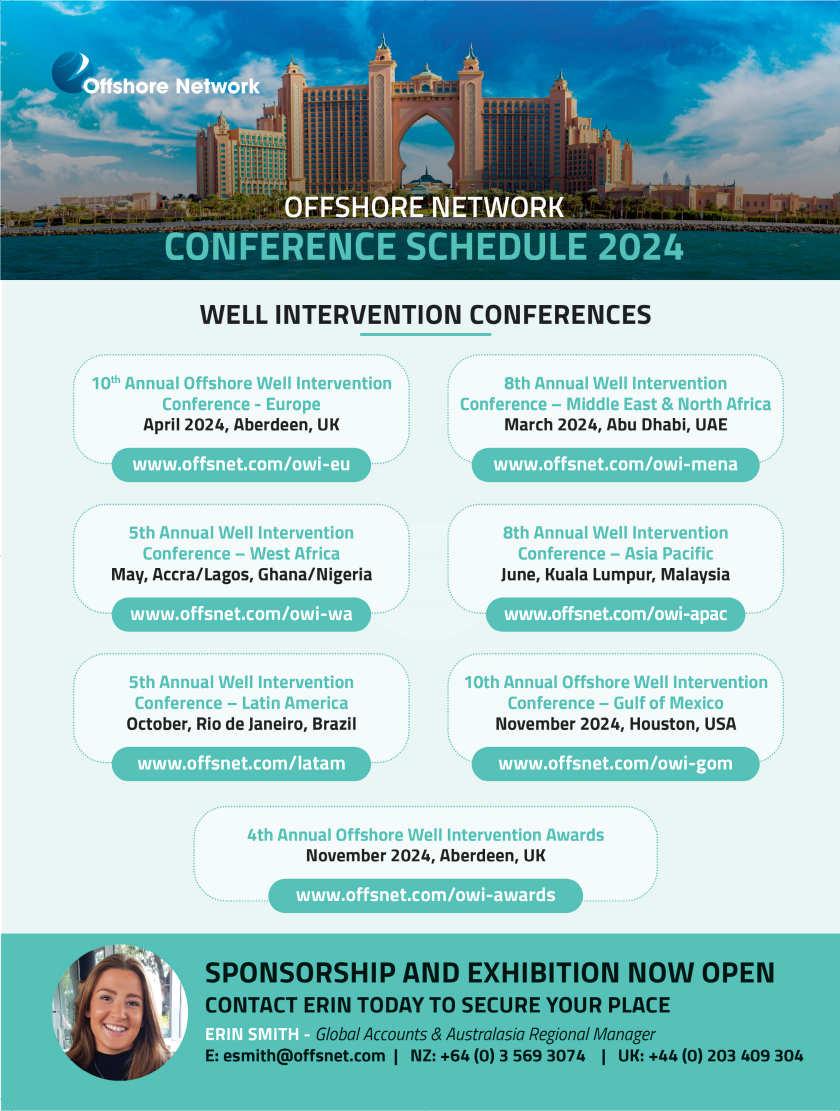
Providing a solid digital foundation with a Ground Twin
Pim Voogd, head of business development at Fugro Middle East and India, outlines how a Ground Twin can help operators unlock valuable insights from geo-data, manage groundrelated risks and run their operations in a safer and more sustainable way.

THE OIL AND gas industry is undergoing rapid transformation, driven by the increased pressure to operate oilfields in a way that guarantees safety and protects the environment. This pressure opens exceptional opportunities, but it means things must be done differently.
At Fugro, we support asset owners and operators to advance their businesses through the establishing of a digital foundation, leveraging cutting-edge technology and innovative solutions which unlock insights from Geo-data. One area where our clients have the potential to make significant changes is in the management of ground-related processes. Issues that often challenge construction projects such as soil instability, early pile refusal, jack-up punchthrough risks, and over-engineering due to ground uncertainty, can be prevented with these processes.
According to Rystad Energy, the projected capital expenditure in the Middle East's oil and gas sector over the next three years is anticipated to exceed a staggering US$100bn. Within that substantial amount, an eye-opening US$10bn is estimated to potentially be spent dealing with groundrelated issues.
Consider the potential outcomes of reducing this expenditure by 10-20%, simply by enhancing data management practices, a process very similar to other digital solutions we are very familiar with. Imagine a scenario
where you find yourself in an unfamiliar city armed only with a paper map, struggling to navigate through its streets. Similar to how satellite navigation revolutionised our ability to navigate unfamiliar cities, the creation of a digital replica of the underground, or a "Ground Twin," can help save money in dealing with the lifecycle of foundations, earthworks, and other structures that are in contact with the ground.
For most owners and operators, the underground remains a complex mystery. The subsurface that supports current and future structures is usually represented by a few borehole logs or other data types, often tucked away in an archive. Questions about the ground are often challenging to answer adequately, as the data is hard to reach and frequently not designed for the task at hand. Simply put, using the analogy from before, structural engineers that are dealing with foundations are like travellers in a new city, still using paper maps because they do not have
digital tools. It is high time for the digital equivalent of these maps – the "Ground Twin" – to make our work more accurate and costeffective.
What is a Ground Twin?
So what exactly is a Ground Twin? Picture it as a smart model that replicates the ground similar to how a 3D model represents the structure of, for instance, a building. This Ground Twin is georeferenced, meaning every point is correlated with its actual location on Earth, and it contains critical information such as soil type, which can be used for analysis to understand its behaviour. This intelligent model allows users to create cross-sections, visualise strata (layers of soil), formulate synthetic boreholes and perform analysis to understand behaviour of the ground. Since the data resides in an intelligent model, these actions can be performed with a simple click in a matter of seconds.
When equipped with a Ground Twin, owners/operators can quickly make informed decisions.
Digital Oilfields 34 oilreview.me Issue 4 2023
Picture it as a smart model that replicates the ground, similar to how a 3D model represents the structure of a building.”
Image Credit: Fugro
While both the ground and structures are tangible things, the Geo-data depicting the ground differs significantly from familiar structural data. Structural data are standardised and modular, detailing humanmade structures, while the underground is a complex blend of diverse materials.
The Ground Twin is constructed through sophisticated analytics, engineering knowledge, and AI. Existing data points, like borehole logs, are transformed into a 3D model that encompasses the entire surface and volume between the original data points.

To understand this better, let us look at some detailed examples. Say we have an oilfield with a history of ground-related issues. If we create a Ground Twin, we can gather all the data related to the field, like what kind of soil it has, based on, for example, geophysical activity and drilling records. This Ground Twin becomes a live database that is kept up-to-date, giving us a full picture of the field.
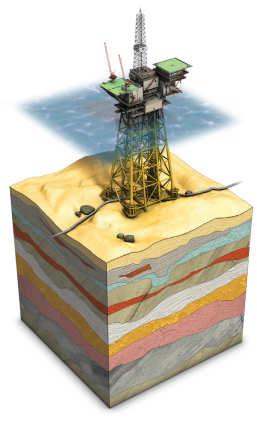
Designing the foundation
Let's delve into a more specific instance. Imagine you're an engineer tasked with designing the foundation for multiple platforms in an offshore oilfield. Ground investigation studies can guide you in tailoring the length and type of pile. However, the unpredictability of the pile length requirement or early pile refusal remains a challenging aspect for a structural engineer. To mitigate this, one must possess a unique
and specialised skill set, alongside a comprehensive understanding of soil behaviour. With the Ground Twin, you have the ability to standardise the design of pile foundations with anticipated behaviour during installation, and this way significantly reduce early pile refusal during installation. This improved insight into pile behaviour during installation streamlines foundation design and mitigates risk for the installation contractor, ultimately reducing the project's overall cost.
Further, consider jack-up or rig move operations. If there is insufficient understanding of the ground conditions, it may not be possible to safely jack up the rig. The rig may be at risk of experiencing a punch-through, where one of the legs experiences a sudden loss of soil resistance resulting in rapid leg penetration. This can lead to damage or loss of the rig, injury to personnel, and environmental damage. When equipped with a Ground Twin, owners/operators can quickly make informed decisions that can complement or optimise new data acquisition. They can assess punch-
through risks or examine past records of leg penetration.
Having all this data in one place helps us work more efficiently and avoid costly delays. It also makes it easier to plan for new data collection. If we already have the data we need, we only have to verify and confirm the existing data through the commission of lighter surveys and satisfy insurance requirements. With a detailed model of the ground from the Ground Twin, we can get new insights and see things we couldn't see before.
This helps us get ahead of ground-related risks, making our operations safer and lowering costs. The Ground Twin gives us a clear, current and correct understanding of the ground, which lets us make informed decisions.
The Ground Twin is not just a tool for managing Geo-data – it is a new way to handle ground-related risks and operations. It helps us run our oilfields in a safer, more sustainable way, which is good for our business and our industry in the long run.
This is precisely the role Fugro plays in this revolution. By assisting energy giants in establishing a solid digital foundation with a Ground Twin, they can unlock valuable insights from Geo-data. It is through such innovations that sustainable advantage is created. And, in the end, what would business leaders want more than that? n
The Ground Twin gives us a clear, current and correct understanding of the ground.”
Digital Oilfields Issue 4 2023 oilreview.me 35
The Ground Twin is constructed through sophisticated analytics, engineering knowledge and AI.
Image Credit: Fugro
Many engineers are still using paper maps because they do not have digital tools. Image Credit: Adobe Stock
Transforming the oil & gas industry: the rise of AI
IN THE DYNAMIC landscape of the oil and gas industries in the Middle East, technological advancements have paved the way for the integration of Artificial Intelligence (AI) systems, heralding a new era of enhanced operational efficiency and informed decision-making. As a rapidly increasing field, AI has garnered considerable attention for its transformative potential across various sectors, and the oil and gas industry is no exception. This realm of innovation revolves around harnessing intelligent algorithms and data analytics to revolutionise
traditional practices, optimise production processes, and maximise output in this vital sector.
Indeed, the field of machine learning is experiencing rapid growth within the oil and gas industry, offering valuable applications in data analysis and optimisation. By leveraging machine learning algorithms, seismic data, well logs, and other geological information can be scrutinised to identify potential oil and gas reservoirs. Furthermore, these algorithms are adept at examining production data, uncovering patterns that can enhance well performance. This transformative technology holds great promise in terms of enhancing efficiency, boosting production rates, and minimising costs across the oil and gas sector, as emphasised by GlobalData.
In its comprehensive thematic report titled Machine Learning in Oil and Gas, GlobalData provides insights into the growing significance of machine learning technology in the

industry's operations. The report also sheds light on the notable efforts of major oil and gas companies such as BP, ExxonMobil, Saudi Aramco, Shell, and TotalEnergies in developing and implementing machine learning tools to address pertinent business challenges.
Ravindra Puranik, an oil and gas analyst at GlobalData, highlighted the industry's recent disruptions, including the impact of COVID-19 on global energy demand and the Ukraine war's consequences on oil and gas supply chains. “The oil and gas industry has experienced two massive disruptions in just three years in the form of Covid-19 and the Ukraine war. While the former impacted the global energy demand, the latter caused upheaval in the oil and gas supply chains following the sanctions on the world’s top energy supplier Russia.
“This has necessitated increased oversight and performance optimisation across all functions, including project design,
Effective use of AI can streamline and optimise business applications across the board.
Key players in the oil & gas sectors are embracing the benefits of artificial intelligence, says Minhaj Zia.
AI 36 oilreview.me Issue 4 2023
The goal is to find every opportunity to lower costs to sustain in the long-term.”
Image Credit: Adobe Stock
construction, logistics, inventory management, and maintenance. Above all, companies also want better oversight into market demand to align their production. The goal is to find every opportunity to lower costs to sustain in the long-term,” he commented.
Machine learning offers a range of benefits in this scenario by driving automation, process improvement, and demand forecasting. It can support the modernisation of maintenance practices, the detection of leakages, streamlined data management and documentation, as well as the optimisation of inventory and supply chains. Through the application of machine learning, companies in the oil and gas industry can navigate challenges and position themselves for longterm success.
Estimations by the Organisation for Economic Co-operation and Development (OECD) project that the integration of AI could add as much as US$16 trillion to the world’s GDP by 2030. This staggering figure represents more than 10% of the overall world gross product.
In Saudi Arabia, the adoption of AI in the oil and gas industry is poised to be driven by several key factors, aligning with global trends and objectives. One crucial aspect is the country's commitment to energy transition and the achievement of climate goals. The urgency to counter cybersecurity threats in the oil and gas sector using AI is another catalyst for its adoption. Additionally, fostering partnerships and collaborations to encourage greater AI adoption and innovation is seen as a strategy for success. Saudi Arabia aims to adopt best practices from other industries and replicate successful examples on a local, regional, and global scale.
Highlighting a case study, the Artificial Intelligence in Oil & Gas, Government Services and Financial Services report highlights the proactive implementation of intelligent technology by Aramco in Saudi Arabia. Through the integration of AI-based systems, Aramco achieved significant improvements in efficiency and cost reduction. Notably, the company successfully reduced overall energy consumption by 18%, lowered maintenance expenses by 30%, and decreased inspection times by approximately 40% at its Khurais oil field.
Furthermore, the ongoing and planned mega and giga projects in Saudi Arabia are
expected to drive further AI adoption. These ambitious initiatives, such as NEOM, which aim to connect everything to AI and the Internet of Things (IoT), exemplify the Kingdom's commitment to digital transformation. For AI-focused businesses, especially software providers, NEOM presents significant untapped potential, offering lucrative business opportunities. Additionally, the smart infrastructure planned for 'The Line,' announced by Crown Prince HRH Mohammed bin Salman in 2021, is estimated to be valued at more than US$200bn. This further underscores the country's efforts to incorporating AI into its development plans.
AI in cybersecurity
As the oil and gas industry continues its digital transformation, the increasing reliance on digital systems exposes companies to a growing risk of cyber-attacks. However, this risk also presents an opportunity for enhanced adoption of AI. Safeguarding against sophisticated cyber threats requires a targeted approach encompassing cybersecurity measures, advanced technology solutions, and skilled personnel. To proactively address these challenges, oil and gas firms must identify vulnerabilities and embrace AI and machine learning solutions to mitigate cyber risks effectively.
Furthermore, strategic collaborations and commercial partnerships play a pivotal role in driving AI adoption and fostering innovation. Saudi Arabia, in particular, has been actively engaging with leading technology multinational companies to enhance its capabilities across various sectors, including
oil and gas. A notable example of such collaboration is the agreement signed between Aramco and AVEVA in August 2021. This collaboration focuses on harnessing AI, machine learning, and data management to develop and implement blue hydrogen and decarbonisation facilities in Saudi Arabia.
Additionally, the report identifies three key future trends that will drive AI adoption in the oil and gas industry. First, there is a growing emphasis on monitoring, predicting, and reducing the carbon footprint associated with oil and gas operations. This aligns with the industry's commitment to environmental sustainability. Second, optimising carbon capture, storage, and utilisation (CCSU) processes is gaining prominence as a means of reducing greenhouse gas emissions. Lastly, the industry is scaling up its efforts in the production and utilisation of green hydrogen, further driving the adoption of AI technologies.
By embracing these trends and leveraging collaborative partnerships, the oil and gas industry can continue to enhance its adoption of AI, effectively address cyber threats, and advance its commitment to sustainability and decarbonisation.
Certainly, the Middle East holds immense potential for transformative advancements in its utilisation of AI. As the industry embraces digitalisation, AI systems offer the opportunity to revolutionise traditional practices, optimise production processes, and maximise output. The field of machine learning, in particular, has experienced rapid growth, enabling the analysis of seismic data, well logs, and production data to identify reservoirs and improve well performance. n

Safeguarding against sophisticated cyber threats requires a targeted approach.”
AI Issue 4 2023 oilreview.me 37
An increased reliance on digital systems opens companies up for cyber-attacks.
Image Credit: Adobe Stock
Why the wellhead matters
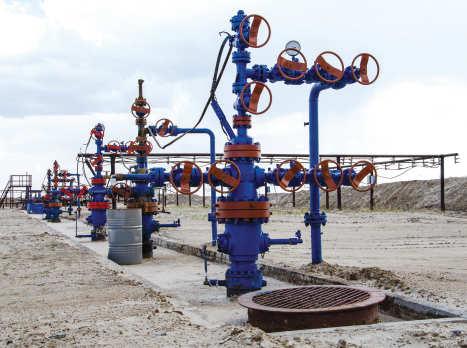
FOR DRILLING OPERATORS, unplanned downtime is the greatest foe. Finding the right wellhead for the job is key to avoiding non-productive time (NPT). While spending less on the front end may sound appealing, ensuring the reliability of the wellhead is vital in minimising downtime and maximising rig time.
Investing in quality wellheads
In today’s world, companies prioritise cost control regardless of market prices, and the wellhead is no exception. But in drilling, time is also money, and in the long run, higher quality wellheads are definitely preferable.
The advantages start at the beginning –wellheads with inferior components that arrive damaged or missing parts create immediate delays. Lower-quality wellheads are often more difficult to install, taking up even more time. Load rings that fail to function easily waste hours. Make-ups and break-ups slow down operations. Meanwhile, rig time continues to fall below optimum levels.
However, the most significant operational concern with wellheads is support. Every wellhead will require service at some point, as components log additional hours. When operators are forced to resolve equipment challenges on their own without a skilled technical support partner, NPT is almost always a given. Without insight from the wellhead manufacturer, any costs saved at the outset will be lost due to the time and effort needed to investigate and repair the compromised machinery.
Supporting EHS
Companies must also factor in the health and safety of their workforce and the impact made to the rig when deciding which wellhead to use. While all drilling rig components play their own part in successful projects, the wellhead's role in providing pressure control makes it one of the major factors in ensuring machinery’s environmental compliance and worker safety.
Unreliable wellheads can lead to unexpected environmental impacts from leaks
and openhole incidents. Malfunctioning wellheads require human intervention that always comes with some risks, and teams pushing to get rigs up and running are under pressure to prioritise time over safety. Problems with environmental, health and safety factors all run the risk of slowing down operations.
single-bore system, these wellheads have threaded connections that can be pressuretested in the factory to guarantee reliability in pressure containment. Certain hangers and seals can be installed through the blow-out preventer (BOP) to save rig time, and operators have complete BOP control throughout the entire drilling process.
Reducing NPT with unitised wellheads
Unitised wellheads are one option for superior quality that helps reduce NPT. Incorporating a one-piece body with a
While unitised wellheads were originally developed for offshore use, their advantages have brought them into the onshore oilfield. For example, SPM Oil & Gas’ (formerly Weir Oil & Gas) Update to KOP Unitized Lock-Ring (ULR) Wellhead, saves around 12.5 hours of rig time compared to a conventional wellhead. As land rigs cost US$15,000 to US$100,000 per day, these time savings equate to cost savings of approximately US$250,000 per day for operators.
The ULR can also improve customer safety profiles in the process of holding down costs. It improves safety at the wellsite by eliminating lock pins and protects equipment
Finding the right wellhead for the job is key to avoiding non-productive time (NPT).
Paul Harthorn, technical team lead, SPM Oil & Gas, a Caterpillar Company, discusses the importance of prioritising quality when selecting wellheads.
Drilling 38 oilreview.me Issue 4 2023
The most significant operational concern with wellheads is support.”
Image Credit : Adobe Stock
beyond the wellhead from catastrophic events with an internal lock ring. When one customer in the USA experienced unexpected pressure that caused an 8,500 psi burst during the fracing process, the weld on the bottom of the casing head failed and the wellhead “jumped” several feet into the air.
However, despite sustaining 600,000 psi of force, the ULR was intact – and no workers were harmed. In addition, the other equipment on the site’s surface was undamaged, preventing a repair bill that would have reached US$500,000 at the very minimum.
Rapid technical support is key
Installing a high-quality wellhead does not eliminate the need for convenient and responsive support. SPM Edge Services’ localised skilled technicians provide
installation, repair and refurbishment as well as general support for the wellhead and other rig components, leveraging local content. Experienced support teams can also train field teams on best practices for operations and monitoring, working with crews to pinpoint root causes and develop quick solutions.
Wellheads that are available for a lower upfront cost without extensive postpurchase support ultimately run the risk of costing a company more than higher quality wellheads backed by engineeringdriven technicians. The NPT caused when a part fails at the worst possible time can become very expensive very quickly. Additionally, the pace of the oilfield can keep teams from proactively analysing equipment issues. Without a reliable services partner, preventive measures
GCC drilling rig demand set to grow strongly
ENERGY CONSULTANCY WESTWOOD is predicting a healthy 25% demand growth for land rigs in the GCC region from 2023-2027, as Saudi Arabia and the UAE pump billions into reaching production capacity targets.
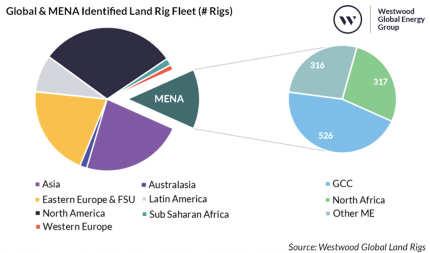
This is according to the first edition of Westwood’s MENA Onshore Drilling Rig Market Forecast, which anticipates that the GCC will continue to grow strongly throughout the fiveyear forecast, with demand in 2027 expected to be 53% higher than 2019. This will be driven by production capacity increases at all major onshore producers, with many of the projects required already having passed FID. In comparison, a -12% change in demand in the Other Middle East region and an 8% increase in North Africa are forecast over the same period. Kuwait and Saudi Arabia have announced major rig fleet increases to cope with the level of demand they are expecting. Westwood predicts rig supply to grow by 11% over the 2023-2027 forecast period to meet demand, most notably in the GCC where the rig fleet is expected to increase by 20%.
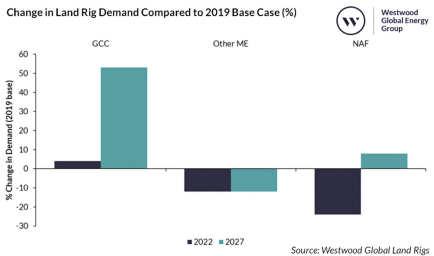
Utilisation across MENA is forecast to average 39% in 2023, increasing to 42% by 2027. However, rates in the GCC are significantly higher, with utilisation forecast at 70% in 2023 increasing to 78% by 2027. In the North Africa and Other Middle East areas, Westwood expects Algeria and Iraq to lead the way in utilisation rates with Algeria increasing from 47% to 60% and Iraq from 37% to 46% over the next five years. Algeria is emerging as a new hotspot for gas exportation to Europe, and Iraq meanwhile continues to set ambitious production targets, which will require a major increase in utilisation of its fleet.
For more information see https://www.westwoodenergy.com/reports/menaonshore-drilling-rig-market-forecast
typically are not put in place, which can ultimately reduce profitability.
Wellhead choice impacts costs
With faster installation, more reliable operations and rapid-response support, higher quality wellheads offer operators a best-case scenario for rig operations. Evolved rig technology helps companies remain competitive. Drilling companies who prioritise quality when selecting their wellheads will benefit from more reliable operations, increased uptime and superior safety and environmental performance –resulting in more successful outcomes overall. n
Paul Harthorn is a technical team lead for SPM Oil & Gas, a Caterpillar company, in Oman. His career in the oil and gas industry spans two decades and multiple roles in the Middle East.
Drilling Issue 4 2023 oilreview.me 39
Image Credit : Westwood Image Credit : Westwood
Odfjell Technology achieves record time for cleaning BOPs
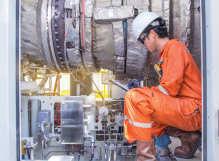
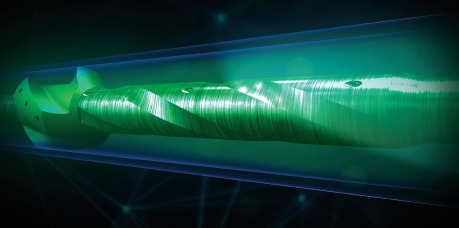
ODFJELL TECHNOLOGY, AN integrated supplier of offshore drilling, well and engineering services, has achieved an industry-first for cleaning blowout preventers (BOPs), reaching a 50% time reduction during a successful trial.

Over a test period of six months, Odfjell Technology revised the procedure for cleaning the BOP on the Johan Sverdrup platform in Norway by increasing the pump rate to allow more water flow into the BOP cavities to aid debris removal.
The annular and variable rams were flushed with two passes at the new recommended flow rates to remove debris, then the BOP stack was flushed at the same rate using Odfjell Technology’s RizeRdillo Advanced Jetting Tool. The flow rates went from 1500 litres per minute (LPM) to 5500LPM while flushing the annular and from 3000LPM to 5500LPM while flushing the BOP. Results from the successful test period proved that no damage occurred to the BOP and annular
with the recommended pump rates, and between six and 12 hours of time could be saved using this new procedure.
The RizeRdillo Advanced Jetting Tool allows for higher pump flow rates, enabling a larger volume of fluid with less pump pressure. This maximises riser cleaning efficiency to reduce operating costs and non-productive time.
Ian Low, global product line manager, Well Intervention at Odfjell Technology, said, “By focusing on delivering world class expertise and technology which enables more efficient operations without compromise on safety, Odfjell Technology proves it is the partner of choice for customers time and again.
“Our ethos has been demonstrated by our expert teams achieving this impressive industryfirst result for cleaning BOPs. BOPs are essential for safe and efficient well operations, and we are proud to deliver leading solutions to our customers to ensure BOPs are operating at optimal levels.”
To learn more about Odfjell Technology’s industry-leading technology, visit: https://www.odfjelltechnology.com/service/rizerdil lo-advanced-jetting-tool/
AARVI ENCON LIMITED is an ISO 9001, 45001 and CRISIL SME 1 certified company headquartered in Mumbai, with offices across the country. It has extended its footprint to the UAE, Oman, Qatar, Saudi Arabia, Indonesia and the United Kingdom.
With more than 35 years of experience, it is a leading provider of technical manpower staffing services to Oil & Gas, Refinery, Petrochemical, LNG, Power, Renewable, Infrastructure, among others. The company currently has more than 5,000 technical personnel on their payroll, with more than 50,000 deployed since the company’s inception.
With a strong client referral base, Aarvi offers technical manpower deputation and operations and maintenance services.
Aarvi have deployed more than 300 personnel for both onshore and offshore international projects.
For both onshore and offshore international projects, they deployed more than 300 technical personnel to their Middle East clients with an expertise in the areas of design engineering, construction supervision, quality engineers/Inspectors, pre-commissioning and commissioning personnel.
More than 500 technical personnel have been deployed by Aarvi in India for its renewable clients. Aarvi has also delivered projects for its global renewable clients
beyond India.
Owing to its excellence in the field, the company has won several awards for its ethics and practices, including the NOCIL Award from the Indian Institute of Chemical Engineers, the HSE Excellence Award from Cairn India Limited, the India Business Excellence Award from Worldview Business Review, and the Jamnalal Bajaj Award presented by late President Dr. A. P. J. Abdul Kalam, among others.
CImage
Credit: Adobe Stock
The RizeRdillo Advanced Jetting Tool.
Company News 40 oilreview.me Issue 4 2023
Image
Credit : Odfjell Technology
Aarvi Encon Limited: outsourcing technical manpower
Image
Credit: Adobe Stock
Aarvi has delivered projects for global renewable clients beyond India.
New acoustic imaging camera
TELEDYNE FLIR HAS released its latest acoustic imaging camera to detect compressed air leaks.

Called the Si 124-LD Plus, the camera offers improved user interface and software capabilities. This increases its capacity to locate tiny air compressor leaks more quickly and accurately.
The Si124-LD Plus offers leak quantification both on camera and in software, enabling inspectors to better prioritise repairs and defend costs. The camera can also be fully integrated with the FLIR Thermal Studio, a software that allows operators to import acoustic images from the camera to the desktop software suite. Users can then easily edit and analyse acoustic imagery.
Yokogawa launches new OpreX gas analyzers
YOKOGAWA ELECTRIC CORPORATION has announced the addition to the OpreX Analyzers lineup of a new generation of nondispersive infrared method (NDIR) gas analyzers that flexibly meet a variety of mounting and operational needs.
The Si124-LD Plus also consists of a number of enhancements such as:
AutoFilter: automatically determines the best filter to use for revealing small leaks that might otherwise remain undetected, all the while speeding up inspections by eliminating unrelated background noise.
AutoDistance: automatically measures the distance to the leak for real-time, reliable, leak-rate estimates up to five metres (16 feet) away from the source.
Continuous Auto-Correct: improves leak detection performance to find even smaller air leaks.
Rob Milner, director of global business development at Teledyne FLIR, said, “The Si124 line of acoustic imaging devices has already proved to decrease inspection time 10-fold, and now with additional software features such as AutoDistance and AutoFilter with the ‘plus’ version, industrial inspectors will enjoy even greater efficiency and the ability to detect even smaller leaks than what was once possible.
“These leaks, if not detected and remedied, can create not only dangerous conditions for buildings and industrial sites but can lead to costly repairs and unnecessary increases in energy costs.”
They are the IR800G Rack Type Infrared Gas Analyzer, the IR810G Wall and Panel Mount Type Infrared Gas Analyzer, and the IR810S explosion-protected model Infrared Gas Analyzer (wall mount). With their capability to simultaneously and continuously measure the concentrations of NO, SO2, CO2, CO, CH4, and O2 with high levels of sensitivity, these new NDIR gas analyzers are expected to play an important role in reducing emissions of greenhouse gases that can be directly attributed to global warming. They can be used for measurement and analysis of combustion exhaust gases from refuse incinerators and boilers, or gases from various types of industrial furnaces.

The new gas analyzers meet a variety of mounting and operational needs.
Halliburton launches resistivity service
HALLIBURTON HAS INTRODUCED the EarthStar X near-bit shallow and ultra-deep resistivity service, part of the iStar intelligent drilling and logging platform.
The EarthStar X service's near-bit, ultra-deep reservoir mapping sensor increases well placement accuracy, detecting geological changes early and enabling quick well trajectory correction to remain in the most productive zones and maximise asset value. Integrated shallow resistivity measurements allow early reserves evaluation and accurate fluid characterisation to further improve reservoir insight while lowering operational complexity and risks.
The EarthStar X service accurately maps the geology in three dimensions using ultra-deep azimuthal resistivity.
“We listened and responded to operators to create the industry’s ‘closest to bit’ ultra-deep resistivity measurements,” said Jim Collins, vice president, Sperry Drilling. “The EarthStar X service enables accurate reserves evaluation to help place wells in the productive zone of even the most complex reservoirs.”
Aquaterra Energy unveils CCS system
AQUATERRA ENERGY HAS introduced a completions and workover system that will specifically support carbon capture and storage (CCS) developments. The end-to-end solution will allow operators to safely perform workover and intervention operations in low temperature and highpressure CCS subsea sites, without concerns of gas leakage.
The patent pending technology is designed to address the distinct issues and complexities that can occur when working with stored and pressurised CO2, for example sweet corrosion and ultra-low temperatures that standard low-alloy carbon steels cannot safely deal with. The solution is based upon Aquaterra Energy’s proven ISO13628-7 completion and workover riser system which incorporates the company’s proprietary AQC-CW connectors to reduce operational time and ensures complete system integrity. Aquaterra is extending this system design to provide the industry with a completion and workover riser that supports the CCS industry.
James Larnder, managing director at Aquaterra Energy commented, “CCS is a critical energy transition technology, expected to scale up rapidly in the run up to 2030, so it’s imperative we continue to advance our solutions for this market. We are proud to play our part in supporting these energy transition goals and through intelligent engineering our expert team is always looking at ways to identify what our customers need today and in the future.”
Ben Cannell, innovation director at Aquaterra Energy said, “I’m delighted to be developing yet another CCS solution for the offshore market that will provide confidence and peace of mind to operators. As with our carbon monitoring tool, we are always innovating to provide the essential and most advanced technology that will benefit our customers and support the energy transition. Our experience of supporting oil and gas operations allows us to transfer those skills to benefit the CCS market, and this solution is a testament to the depth of knowledge and experience our global team has.”
Innovations
The Si124-LD Plus acoustic imaging camera.
Issue 4 2023 oilreview.me 41
Image credit: Teledyne Flir
Image credit: Yokogawa Electric Corporation
Ikon Science launches new investigation tool
IKON SCIENCE, A leading global provider of geoprediction and open subsurface knowledge management software and services, has introduced its state-of-the-art 4D inversion technology tool. This seismic and well data investigation tool is featured in RokDoc 2023.3.
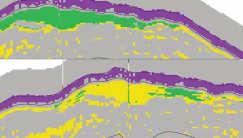
As subsurface exploration becomes increasingly complex, there is less room for error. For exploration and production activities, quantitative interpretation workflows must produce not only a precise prediction of properties, but also a good understanding of uncertainties. Ikon’s TimeLapse Ji-Fi app offers complete 4D fluid tracking capabilities for production and injection scenarios and is applicable in most hydrocarbon production campaigns and Carbon Capture Utilisation and Storage (CCUS) efforts. The new app provides the ultimate integration of workflows for a consistent 4D analysis of reservoirs.
As new rock physics models unlock functionality to a larger family of geologic plays and workflows, additional sand, shale and carbonate rock physics models that capture compaction, and clay evolution have been added to the RokDoc and rock physics modelling function (RPML) libraries. In addition, a new fractured-carbonate rock physics model for feasibility and prediction of fracture density streamlines data sharing and integration with geomechanics workflows.
Useability is enhanced with new cross-plot display options, input filters for easier data management and a refreshed probability density function (PDF) management system. Ji-Fi and many other rock physics workflows that rely on facies classification are now easier to use with new, per-working-interval prior proportion inputs for 1D, 2D and Depth Trend Bayesian. These user-centric advances make documentation and summary plots easily repeatable for test comparisons so the models may be rapidly refined and improved.
Deep QI machine learning and rock physics functions automation is expanded with XGBoost, which is now combined with grid search for parameter tuning. This game-changing machine learning property prediction and automated RPML algorithm is further augmented to directly calibrate mineral volumes in rock physics models. These enhancements drive workflow efficiencies to deliver immediate value to energy companies.
"RokDoc 2023.3 has leveraged user insights to further enhance Ikon’s best-in-class technologies and modernise core workflows, enabling us to lead the geoscience community in 4D reservoir monitoring," said Alan Mur, product manager for QI Applications, Ikon Science. "Our focus is on helping all of our users find the best answers with the least effort.”
Collaboration on well construction automation solutions
HALLIBURTON COMPANY AND Nabors Industries have announced an agreement to collaborate on leading well construction automation solutions, initially deployed in Iraq.
The agreement brings together the drilling process automation and digital solutions of Nabors with Halliburton’s sub-surface expertise.
These include the Halliburton Well Construction 4.0 digital surface and subsurface drilling technologies, the LOGIX Autonomous Drilling Platform, the Nabors SmartROS universal rig controls and automation platform and RigCLOUD high-performance digital infrastructure platform.
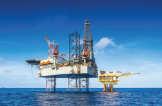
Initially deployed in Iraq, the companies’ technologies automate well construction services from planning to execution across both subsurface and surface equipment and environments. Halliburton and Nabors will engage on further opportunities to expand projects for other customers in countries across the globe.
“Halliburton’s and Nabors’ efforts will make it easier for customers to deploy Halliburton’s automation solutions that can enhance rig capabilities, lower well construction costs, and reduce operational risks,” said Steve Haden, senior vice president, Halliburton Project Management.
“This agreement brings together the drilling process automation and digital solutions of Nabors with Halliburton’s sub-surface expertise, resulting in a unique combination that will drive well construction efficiencies through repeatable and consistent outcomes,” said Subodh Saxena, senior vice president, Nabors Drilling Solutions.
TGT Diagnostics launches
Chorus X acoustic platform
TGT DIAGNOSTICS HAS announced the launch of its latest acoustic platform, ChorusX, a new diagnostic resource specifically designed to locate and characterise flow in oil and gas wells. This all-new acoustic array platform enables energy companies to find and map fluid flow throughout the well-reservoir system with greater ease and precision, helping them to keep wells safe, clean, and productive.
Ken Feather, TGT’s chief marketing officer, commented, “Understanding flow dynamics in the well system is the key to unlocking better well and reservoir performance, and acoustic techniques have become an indispensable means of achieving that goal. ChorusX is the result of two decades of intensive research, innovation, and extensive field experience in applying the power of sound to flow diagnostics in thousands of wells. Eight highdefinition array sensors, extreme dynamic range recording and a unique phase analysis engine work in concert to deliver uncompromising levels of clarity, precision, and certainty to analysts and well operators.”
At the heart of ChorusX is a compact array of eight nano-synchronised sensors that record high-resolution flow sounds across an extreme dynamic range of intensities and frequencies. A unique phase analysis workflow combines specialised acoustic field modelling with a sophisticated waveform-matching algorithm. This combination delivers an important new dimension to acoustics and flow diagnosis – radial distance. In combination, these advances underpin four new complementary answer products that enable TGT analysts to easily and accurately locate and map flow throughout the well system.
Feather continued, “ChorusX has been redesigned from the ground up to excel in three important areas: extending spatial and audible reach to record the lightest, quietest, and furthest flows; recognising different types of flows; and pinpointing flow sources with unmatched accuracy in depth, and radially. Flow events are displayed more clearly in high definition, enabling operators to plan actions with greater confidence and implement them efficiently with precision.”
TGT has been advancing the use of acoustics to locate and characterise flow for more than two decades, and ChorusX is available to all TGT Diagnostics customers through a range of True Flow and True Integrity/Seal Integrity products.
Innovations
Ikon’s Time-Lapse Ji-Fi app offers complete 4D fluid tracking capabilities for production and injection scenarios.
42 oilreview.me Issue 4 2023 Image credit: Ikon Science Image source: Adobe Stock
The agreement brings together the drilling process automation and digital solutions of Nabors with Halliburton’s sub-surface expertise.
TGS launches Well Data Analytics
TGS, A GLOBAL provider of energy data and intelligence, has launched its cloudbased analytics platform, Well Data Analytics.The easy-to-use analytics tool empowers energy professionals by offering an affordable and comprehensive solution for benchmarking, predicting, and optimising well performance, all while ensuring the utmost data quality and accuracy.
Well Data Analytics brings together the industry’s largest library of subsurface data, powerful visualisation and advanced analytics. The application provides users with a streamlined and intuitive experience that enhances productivity across their operations. By leveraging TGS' extensive data portfolio, this platform offers access to highly competitive well data within seconds, enabling efficient analysis and effective decision-making to drive essential business objectives. The streamlined analytics tool also provides fast and easy access to vast cloud-based well data resources that are already QC’d and ready to use.
Smart inspection system to monitor valves
I.SAFE MOBILE AND its strategy partner Senseven have launched Valve Sense, a mobile inspection system for monitoring critical valves.

Industrial customers can now use the software and AIbased system in conjunction with i.safe MOBILE’s IS540.1 smartphone to monitor critical valves in explosive hazardous areas. Valve Sense helps to detect valve leakage of water, gas, steam or air at an early stage and to react promptly, thereby meeting the high demands of customers in the chemical, pharmaceutical, oil and gas sector and other demanding industries in explosive areas.
By performing regular in-house valve maintenance with Valve Sense, companies have the option of only having to replace valves when they really have a defect, while functioning valves can continue to be used.
"The combination of Senseven's technology with our 5G smartphone IS540.1 offers our customers an enormous increase in efficiency in the area of maintenance," commented Martin Haaf, CEO of i.safe MOBILE.
The system monitors critical valves in explosive areas.

Alfa Laval introduces two new hygienic valves
ALFA LAVAL IS unveiling two new hygienic valves, the Alfa Laval Unique Mixproof CIP and the Unique Mixproof Process, extending its hygienic double-seat valve range.
With the introduction of these two innovative mixproof valves, manufacturers concerned about product integrity now have a cost-effective way to enhance product safety while boosting process efficiency and sustainability.
The Unique Mixproof CIP is a double-seat valve that safely and efficiently manages the flow of cleaning media during cleaning-in-place (CIP). The Unique Mixproof Process, a compact version of proven Alfa Laval double-seat valves, is configurable and available in various sizes to meet manufacturers’ fundamental hygienic processing requirements. Both are capable of simultaneously routing two different fluids without the risk of cross-contamination, thereby contributing to more uptime and reduced total cost of ownership.
“These new Unique Mixproof valves deliver product safety, process flexibility, straightforward maintenance, and opportunities for water and CIP media savings,” says Anders M. Lyhne, product portfolio manager, Alfa Laval.
Jan Schoolmeesters, EVP of Digital Energy Solutions at TGS, said, “TGS holds the largest and most accurate well data library in the world, and we are excited to announce that this new cloud-based platform harnesses its full potential. The tool was meticulously designed with and for our customers and we take great pride in our collaborative approach. At every stage of development, we actively engaged our customers to guarantee an exceptional user experience and impeccable data quality, including valuable geologic insights, which serve as the cornerstone of Well Data Analytics.”
Well Data Analytics combines highly adaptable search workflows, multi-variate map-based visualisations and analytics, advanced time-series plotting, benchmarking tools, and highly customisable dashboard layouts with highquality well data and well performance data in a cloud-based application. These key features allow users to benchmark, predict and optimise well performance more easily and with more accuracy.
Zero emissions actuator solution launched
AUTOMATION TECHNOLOGY, INC. (ATI), a leading provider of customised and comprehensive valve automation solutions, has launched its Zero Emission ElectroHydraulic actuator solution to eliminate the carbon footprint of pipeline operations
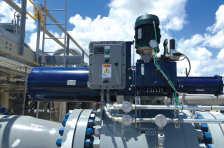
The Zero Emission Electro-Hydraulic package provides a comprehensive solution to lower emissions without requiring pipeline gas as the actuator’s primary power supply. Pipeline actuators have previously relied on using the gas from the pipeline as a power source, which is then emitted into the atmosphere. With ATI’s self-contained Zero Emission Electro-Hydraulic solution, the power source is attached to the actuator in a compact suite. Cooper Etheridge, CEO, ATI, said, “The Zero Emission Electro-Hydraulic package is the ideal solution for zero methane and VOC emission requirements for emergency shutdown valves. We are proud to help our customers achieve zero emissions within their operations.”
Available in spring-return or double-acting configurations, the Zero Emission Electro-Hydraulic package can be mounted directly to the valve via flange or custom adaption. The pump, motor, reservoir limit switches, solenoids and positioners are mounted to the actuator.
Innovations
The platform offers access to highly competitive well data within seconds.
The solution helps to reduce the carbon footprint of pipeline operations.
Issue 4 2023 oilreview.me 43
Image credit: i.safe MOBILE Image credit: ATI
Image credit: TGS
Project Databank
Compiled by Data Media Systems
OIL, GAS AND PETROCHEMICAL PROJECTS, OMAN
Project Name City Facility Budget (US$) Status Al Ghaith for Chemical Industries - Chlor-Alkali Plant Sur Chlor Alkali 45,000,000 Construction ARA Petroleum - Qarat Al Milih Production Station Al Wusta Development Drilling & Production 200,000,000 EPC ITB Canada Business Holdings - Low Sulphur Fuel Oil Refinery Duqm Refining 6,200,000,000 FEED ENI - Block 47 Onshore Exploration and Production Northern Oman Development Drilling & Production 300,000,000 Engineering & Procurement Hydrocarbon Finder - Block 7 Onshore Exploration and Production Al Wusta Development Drilling & Production 160,000,000 Construction Maha Energy - Block 70 Exploration and Production Central Oman Oil Field 60,000,000 Construction Marsa LNG - Sohar LNG Bunkering Terminal (SLNGB) Sohar LNG 250,000,000 EPC ITB MOL - Block 50 (Masirah Bay Offshore) Exploration Masirah Basin Oil Field 250,000,000 Construction Oman Wanfang - Crude Oil Refinery Duqm Exploration & Production 5,000,000,000 Announced OQ - Block 48 Onshore Exploration and Production (Malih Block) Al Dahirah Development Drilling & Production 30,000,000 Feasibility Study OQ - Block 60 Concession Development - Overview Central Oman Onshore Oil and Gas Field 1,100,000,000 Construction OQ - Marubeni Corporation - SalalaH2 Salalah Free Zone (SFZ) Hydrogen 1,000,000,000 Feasibility Study OQ - Salalah-Musandam Strategic Fuel Reserves (SFR) Salalah Offsite & Storage Tanks 500,000,000 EPC ITB OQ Exploration & Production - Block 60 Concession - Central Oman Development Drilling & 150,000,000 Construction Bisat Oilfield Development - Full Field Development Production, Oil Field OQ Gas Networks - Al-Kamil ( BVS 9) to Sur GSS Gas Pipeline Sur Gas Pipeline 300,000,000 Construction OQ Gas Networks - Fahud to Sohar Second Loop Line Sohar Gas Pipeline 250,000,000 EPC ITB OQ Gas Networks - South Grid Debottlenecking - Various Gas Pipeline 245,000,000 Construction OQ8 - Duqm Refinery & Petrochemical Complex - Duqm Butadiene, MTBE, Polyethylene, 9,000,000,000 Feasibility Study Duqm Petrochemical Project (DPP) Aromatics, Ethylene Glycol, Ethylene Oxide OQ8 - Duqm Refinery & Petrochemical Complex - Duqm Refining 2,780,000,000 Commissioning Main Process Units and Offsite Facilities OQ8 - Duqm Refinery & Petrochemical Complex - Duqm Petroleum Oil 2,080,000,000 Commissioning Duqm Refinery - Offsites and Utilities OTTCO - Main Line Oil - Ras Markaz Crude Oil Terminal Pipeline Ras Markaz Oil Pipeline 300,000,000 FEED OTTCO - Ras Markaz Crude Oil Park - Overview Ras Markaz Offsite & Storage Tanks 400,000,000 Construction OTTCO - Ras Markaz Crude Oil Park - Phase 2 - Ras Markaz Offsite & Storage Tanks 925,000,000 Project Announced Crude Oil Tanks and Associated Infrastructure OTTCO - Ras Markaz Crude Oil Park - Phases 3, 4, and 5 - Ras Markaz Offsite & Storage Tanks 210,000,003 Project Announced Crude Oil Tanks and Associated Infrastructure PDO - Mabrouk North East Gas Field Development - Al Wusta Gas Field 500,000,000 Construction PDO - Marmul Main Production Station (MMPS) - Gas Compression Marmul Gas Compression 150,000,000 Construction PDO - Marmul Main Production Station (MMPS) - Tanks and Heaters Marmul Offsite & Storage Tanks 70,000,000 FEED Plot Production Facilities PDO - Marmul Polymer Phase 3 (MPP3) - Off-Plot and On- Marmul Development Drilling & Production 270,000,000 Commissioning PDO - Mazoon Petrogas - Lekhwair Small Fields (LSF) Development Lekhwair Development Drilling & Production 100,000,000 Project Announced Petroleb SAL - Block 57 Onshore Exploration and Production Dhofar Development Drilling & Production 40,000,000 Engineering & Procurement Salalah Petroleum Company - Petrochemical Factory Salalah Free Zone Petrochemical Plant 88,000,000 Engineering & Procurement Salalah Refinery (SFZ) - Salalah Refinery Project Salalah Free Zone (SFZ) Refining 2,500,000,000 Project Announced Salalah Urea Company - Urea Plant Salalah Free Zone Urea 285,000,000 Project Announced Shell - Block 11 Development and Production Al Wusta Gas Field Engineering & Procurement Shell Integrated Gas Oman - Marsa Liquefied Natural Gas - Northern Oman Onshore Gas Pipeline 2,000,000,000 Engineering & Block 10 Development and Production Procurement Shell Oman Marketing Company - Fuel Bunkering Duqm Marine Terminal 150,000,000 Project Facilities at Duqm Port Announced Tethys Oil Company Qetpet Limited - Block 58 Onshore Dhofar Development Drilling & Production 80,000,000 Engineering & Exploration and Production Procurement TotalEnergy - Block 12 Onshore Exploration and Production Central Oman Gas Field 100,000,000 Engineering & Procurement

Project Databank
Compiled by Data Media Systems
Project Focus
Compiled by Data Media Systems
PDO - Marmul Main Production Station (MMPS) - Gas Compression
Name of Client Petroleum Development Oman (PDO)
Estimated Budget (US$) 150,000,000
Award Date 2021-Q1
Main Contractor Petrofac
Facility Type Gas Compression Status Construction Location Marmul, Oman
Project Start 2017-Q1 End Date 2024-Q3
Background
The Marmul Main Production Station (MMPS) is located in the south of Oman, approximately 800 km south of Muscat. The purpose of the Gas Compression is to eliminate permanent flaring and manage associated gas. The work includes gas recovery and booster compressors, gas sweetening, dehydration, and other units, utility systems, and modification of existing facilities.
Project Status
Date Status
Jun 2023 90% of the execution phase has been completed. PDO will appoint a contractor to start the commissioning work in Q3 2023. The trial operation is expected to kick off in late 2023.
Sep 2022 The construction works are underway by Petrofac. The engineering designs have been finalised.
Nov 2021 All the purchase orders (PO) for the major mechanical parts have been placed and the virtual data room (VDR) is in progress. Detailed engineering has entered an advanced stage.
Project Scope
The project scope includes:
• Thiopaq unit for the gas sweetening. Capacity: 350,000 sm3/day
• Two booster compressors, capacity of 175,000 sm3/day (2x50%)
• One gas dehydration unit (TEG Injection) and HC Dew pointing unit
• One refrigeration unit
• Condensate stabiliser unit, capacity of 257 sm3/day
• Tie-in at SOGL network at MMPS
• New HP and AP flare systems and closed drain system for new proposed facilities
• Condensate flash vessels and condensate heater
• Instrument air package having capacity of 391 Nm³/h each
• Nitrogen generation package
• Replacement of existing gas recovery compressor (K-2412) with two refurbished redundant reciprocating compressors
• Process and Utility tie-in activity at existing MMPS facility to connect the piping from new facilities
• Firefighting system for the new facilities to be connected to the existing firefighting system
Middle East & North Africa













The Baker Hughes Rig Count tracks industry-wide rigs engaged in drilling and related operations, which include drilling, logging, cementing, coring, well testing, waiting on weather, running casing and blowout preventer (BOP) testing.



North Africa













RIG COUNT Issue 4 2023 oilreview.me 47
MAY 2023 VARIANCE APRIL 2023 Country Land OffShore Total From Last Month Land OffShore Total Middle East ABU DHABI 41 16 57 +1 42 14 55 DUBAI 0 1 1 0 0 1 1 IRAQ 62 0 62 0 62 0 62 JORDAN 0 0 0 0 0 0 0 KUWAIT 26 1 27 +2 24 1 25 OMAN 49 0 49 -1 50 0 50 PAKISTAN 12 0 12 +2 10 0 10 QATAR 2 9 11 -1 3 9 12 SAUDI ARABIA 68 16 84 0 74 10 84 SUDAN 0 0 0 -2 2 0 2 SYRIA 0 0 0 0 0 0 0 YEMEN 0 0 0 0 0 0 0 TOTAL 260 43 303 +1 267 35 302
Source: Baker Hughes
ALGERIA 32 0 32 +1 31 0 31 EGYPT 29 5 34 0 26 8 34 LIBYA 13 1 14 0 13 1 14 TUNISIA 2 0 2 0 2 0 2 TOTAL 76 6 82 +1 72 9 81
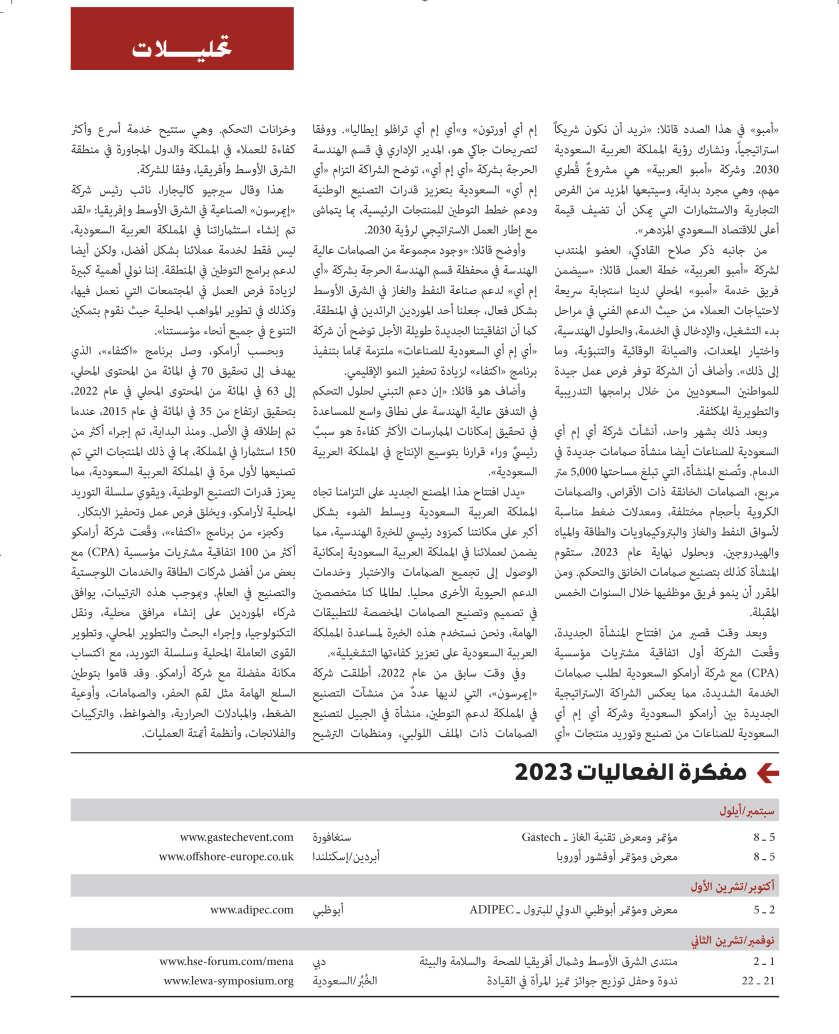
05 oilreview.me Issue 4 2023
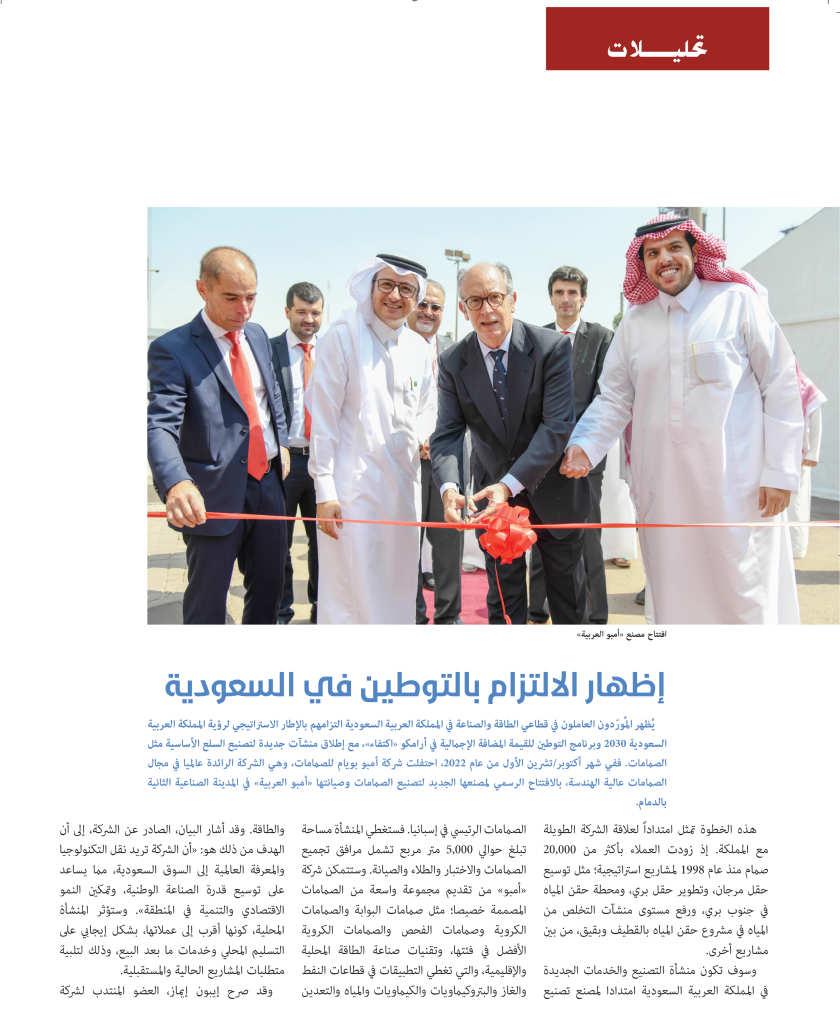
Issue 4 2023 oilreview.me 04
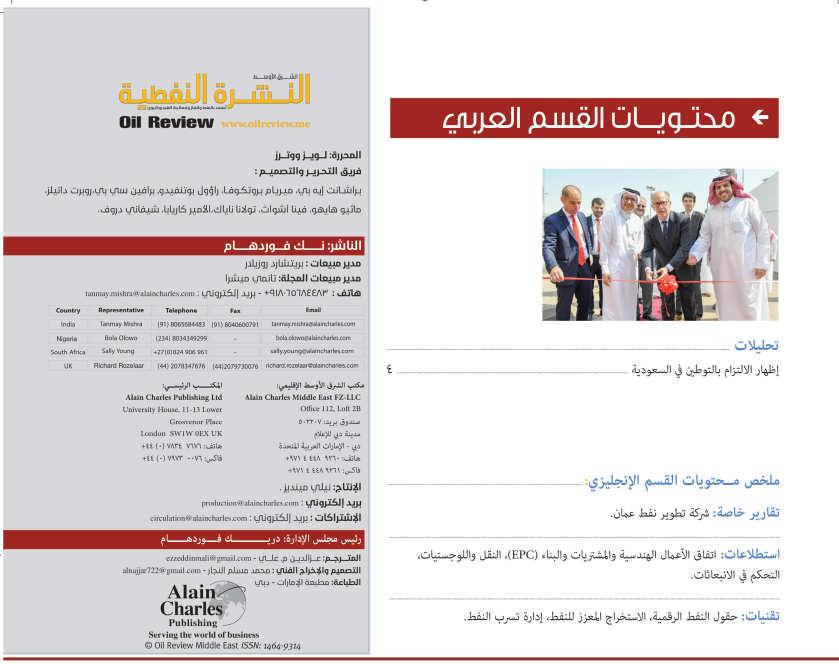
Company......................................................................................................................................................................Page Aarvi Encon (FZE).............................................................................................................. 9 DMG World Media (Abu Dhabi) Ltd.......................................................................................................................................................................................................45 MABI AG...........................................................................................................................................................................................................................................................23 Oman Cement Company..............................................................................................................................................................................................................................2 Soluforce B.V.....................................................................................................................................................................................................................................................7 ADVERTISERS INDEX

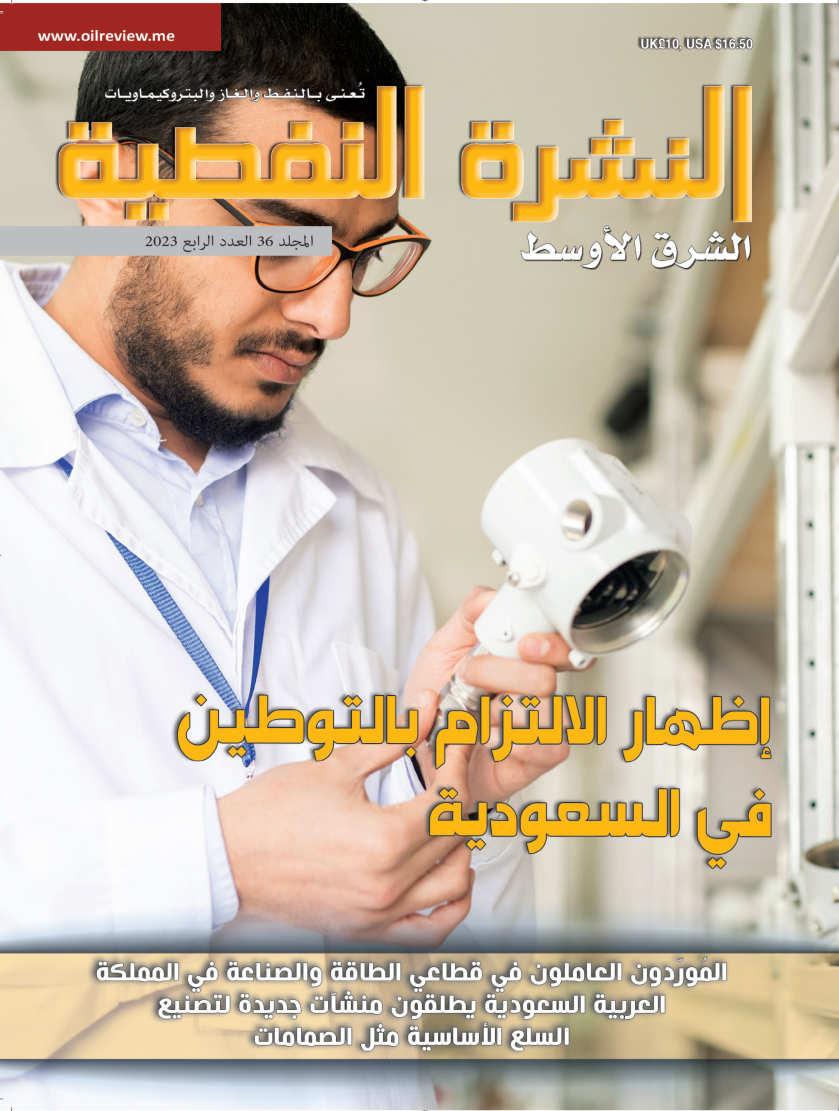











 The opening ceremony.
The contract was signed at an official ceremony in Algiers.
The opening ceremony.
The contract was signed at an official ceremony in Algiers.





 Horizon OilWell Academy utilising 3t Energy Group's simulation technology.
David Mitchell, Middle East manager, OSSO
Horizon OilWell Academy utilising 3t Energy Group's simulation technology.
David Mitchell, Middle East manager, OSSO



 PDO’s Yibal Khuff project produces around five million cubic metres of gas and 20,000 barrels of crude oil per day.
PDO’s Yibal Khuff project produces around five million cubic metres of gas and 20,000 barrels of crude oil per day.















 Typical enhanced oil recovery system using injected CO2
Typical enhanced oil recovery system using injected CO2




 There are several technologies available to manage high-pressure situations and prevent pressure buildup by isolating downstream equipment from the high-pressure source.
There are several technologies available to manage high-pressure situations and prevent pressure buildup by isolating downstream equipment from the high-pressure source.






















































